
Namibia chapter five
Windows and doorways in time: The Kolmanskop Ghost Town.
You didn’t see it when you passed? Veronica is surprised. I had asked her how far Kolmanskop is from Lüderitz. I had passed it on my way in.
It’s not far, she tells me, and I am determined to wake up early and be the first one there. I tell her I’ll be taking breakfast at 07h.
I’m not the first one in; I’m the second. It’s just after 08h. Another car is in the parking lot when I arrive. I’ve been told there’s a walking tour at 0930 but I want to spend time as alone as possible to take photos before contending with others.
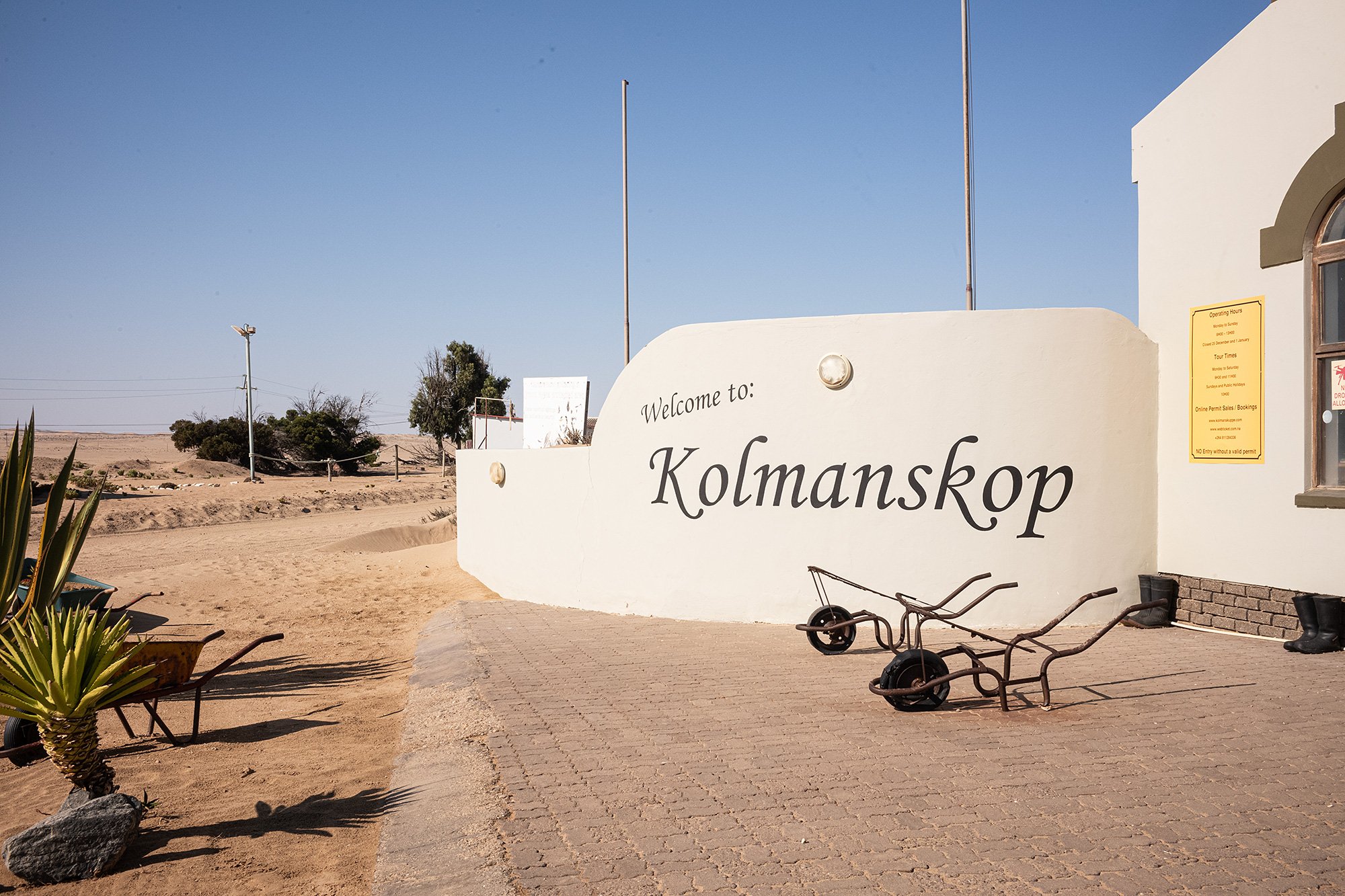
The other visitors seem to have chosen a different route as there’s no one in the first building I enter. It’s labeled a bakery on the map, though I don’t know if I’d be able to determine that from what remains. Warning signs hang by door and windows, reminding me that I enter at my own risk. The buildings are fragile, the ceilings could collapse.
Sand piles up in corners, against walls, blown by the winds.

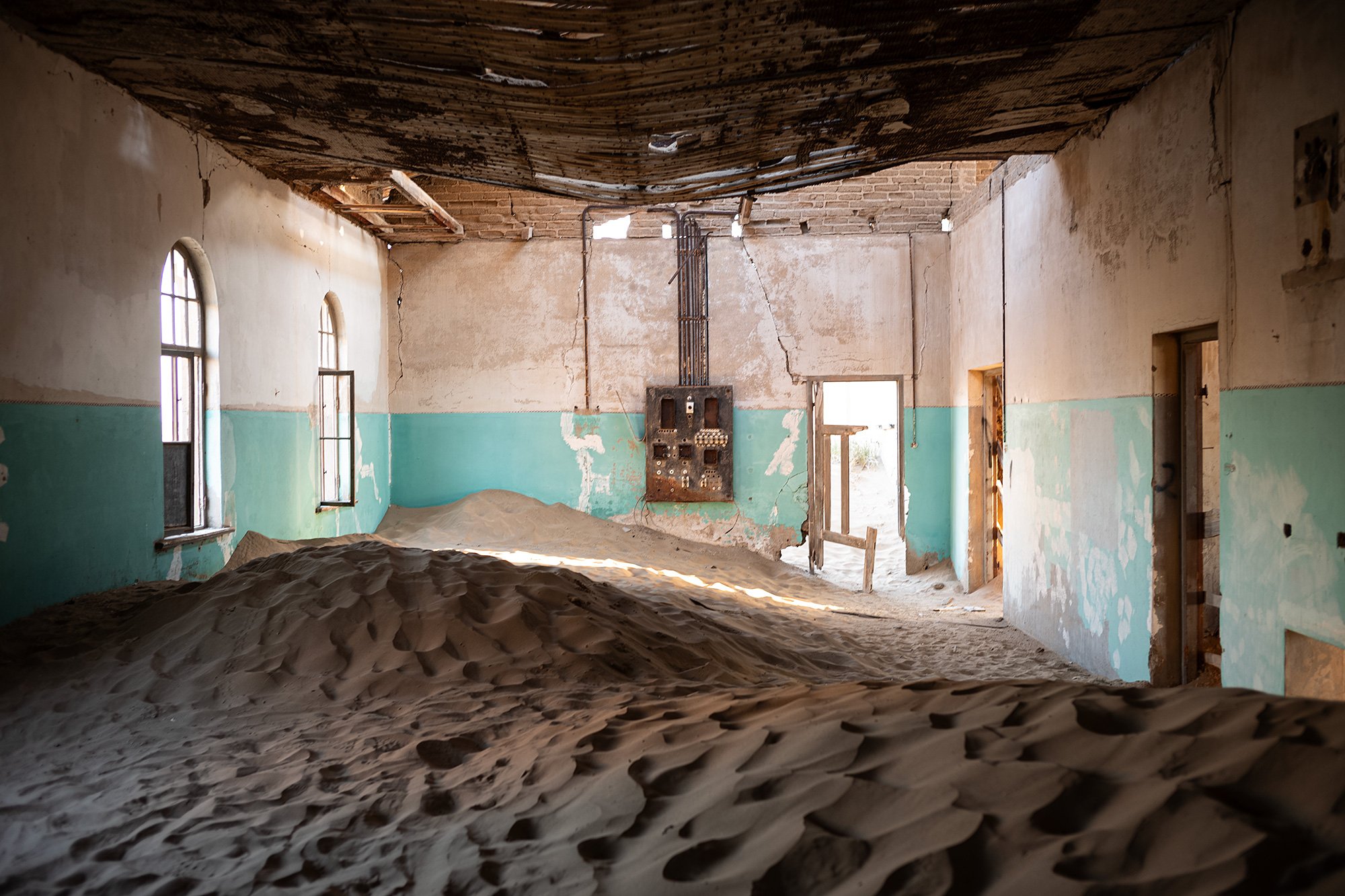
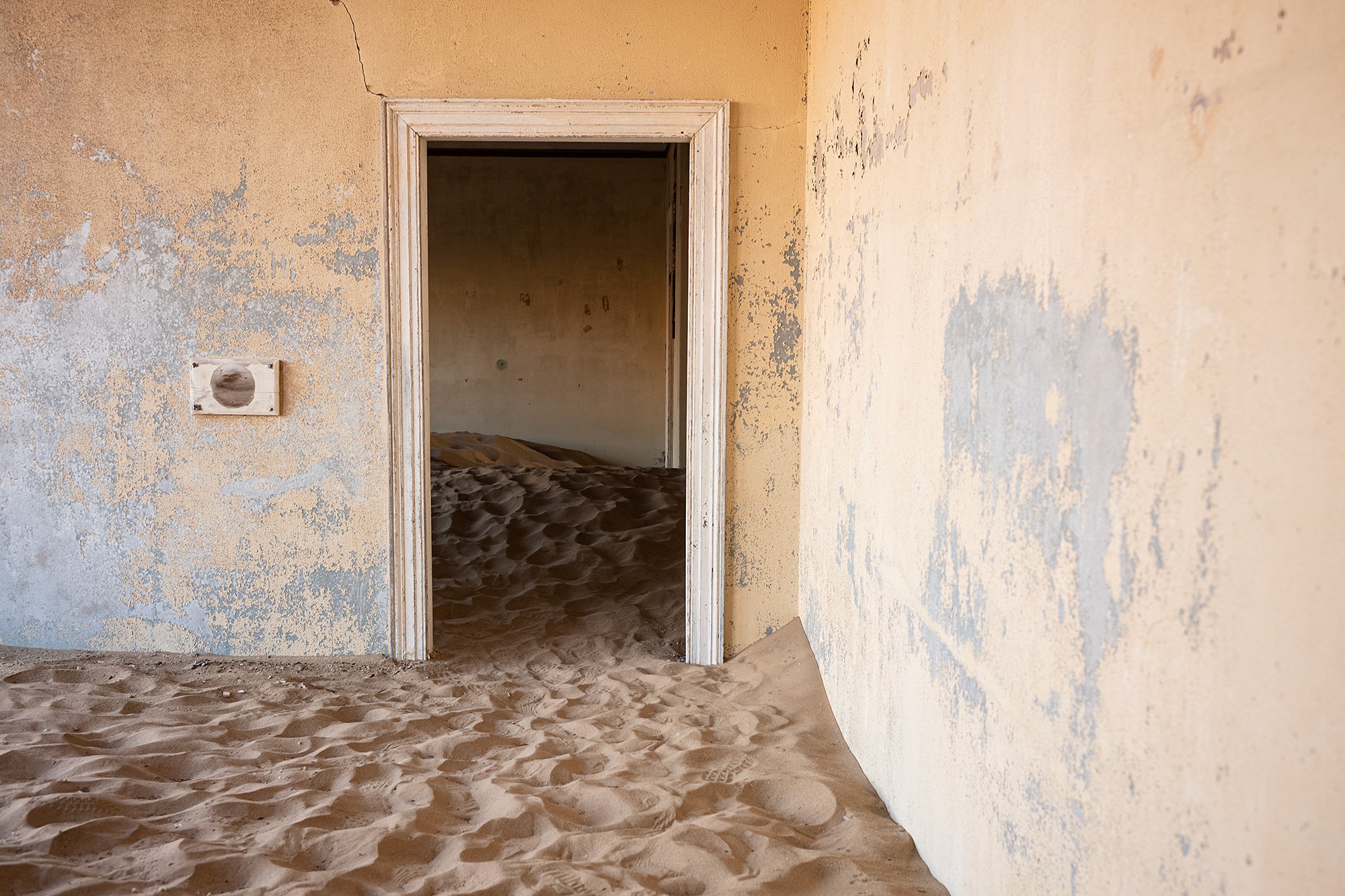
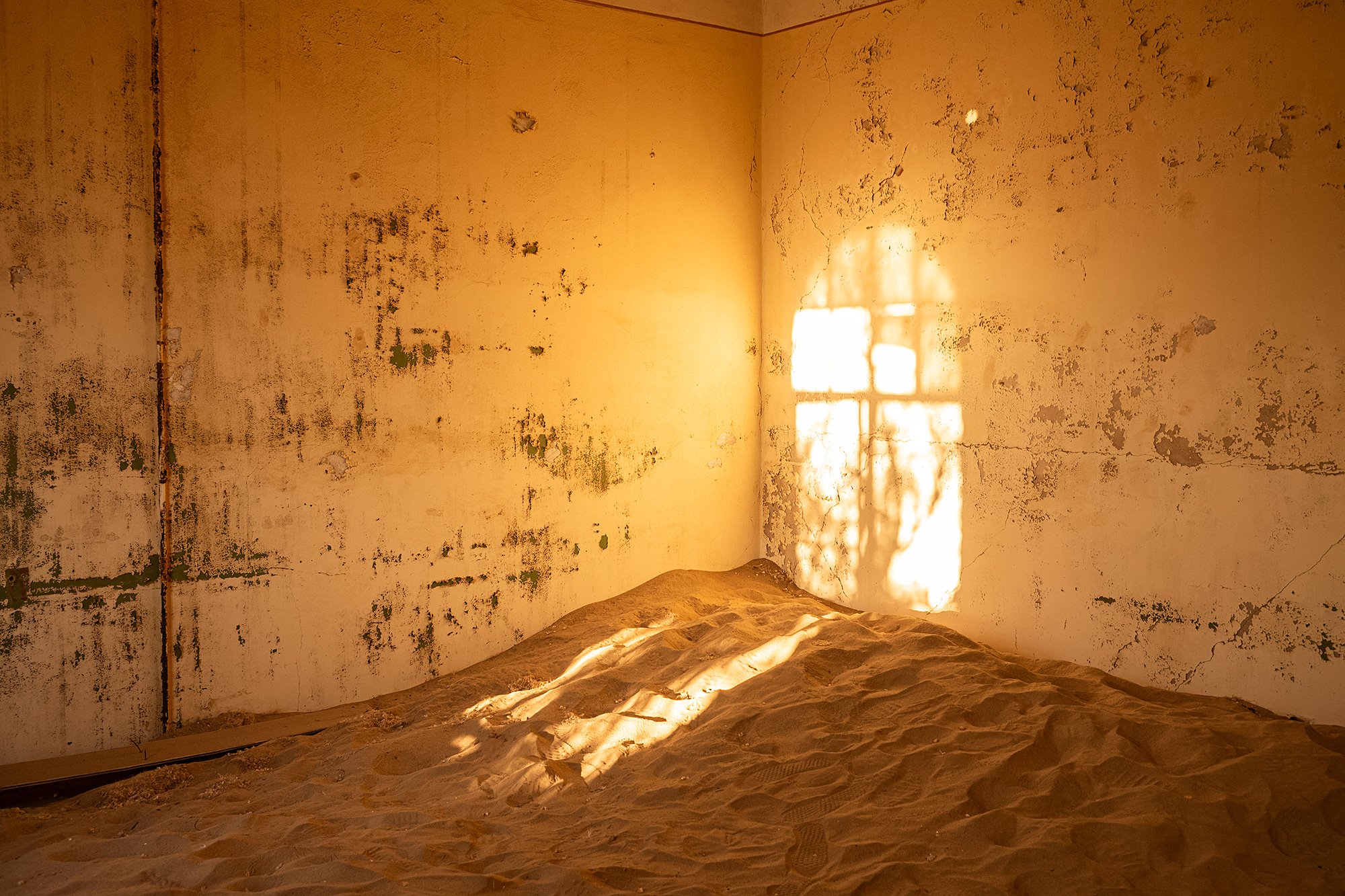
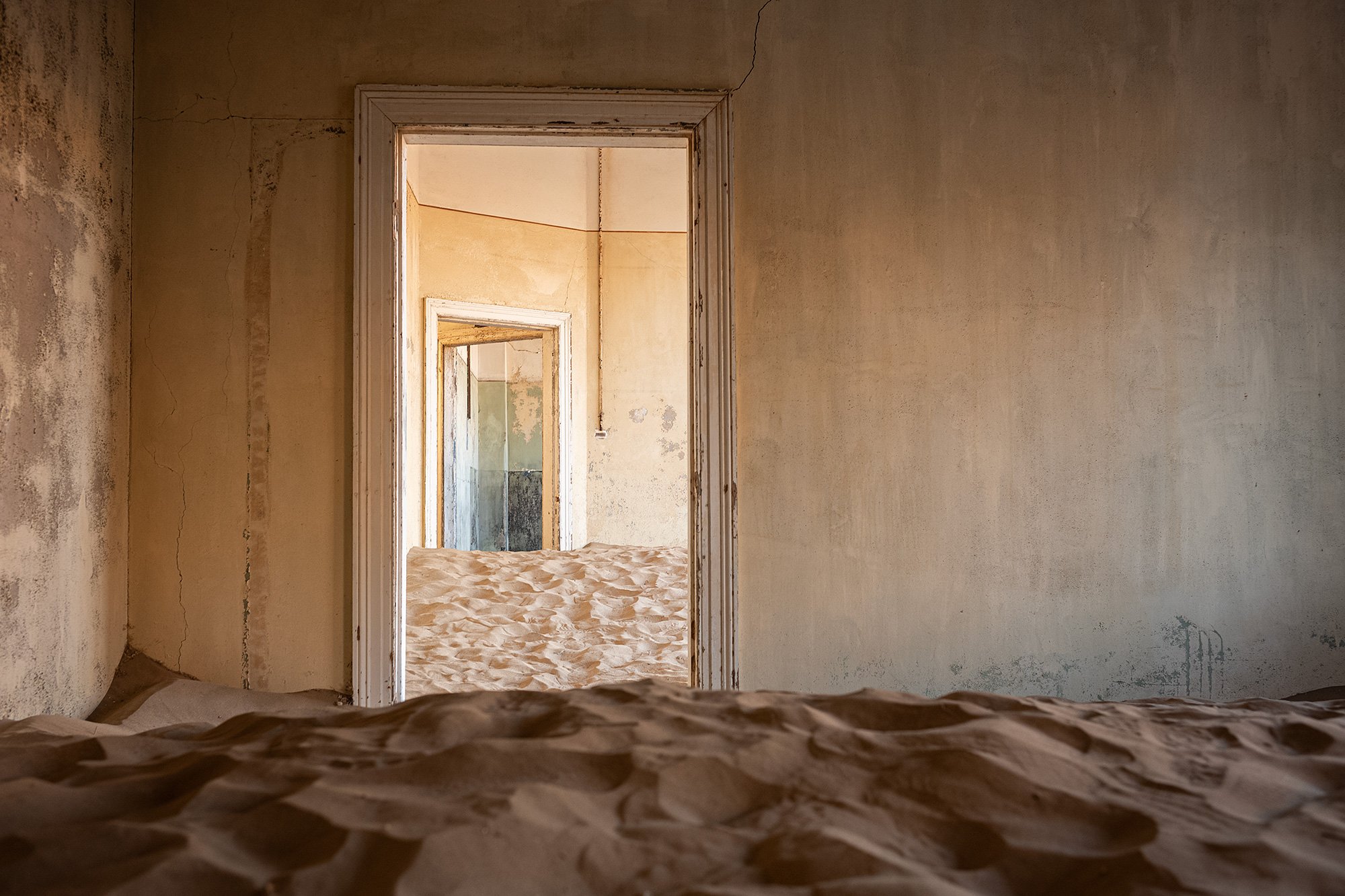
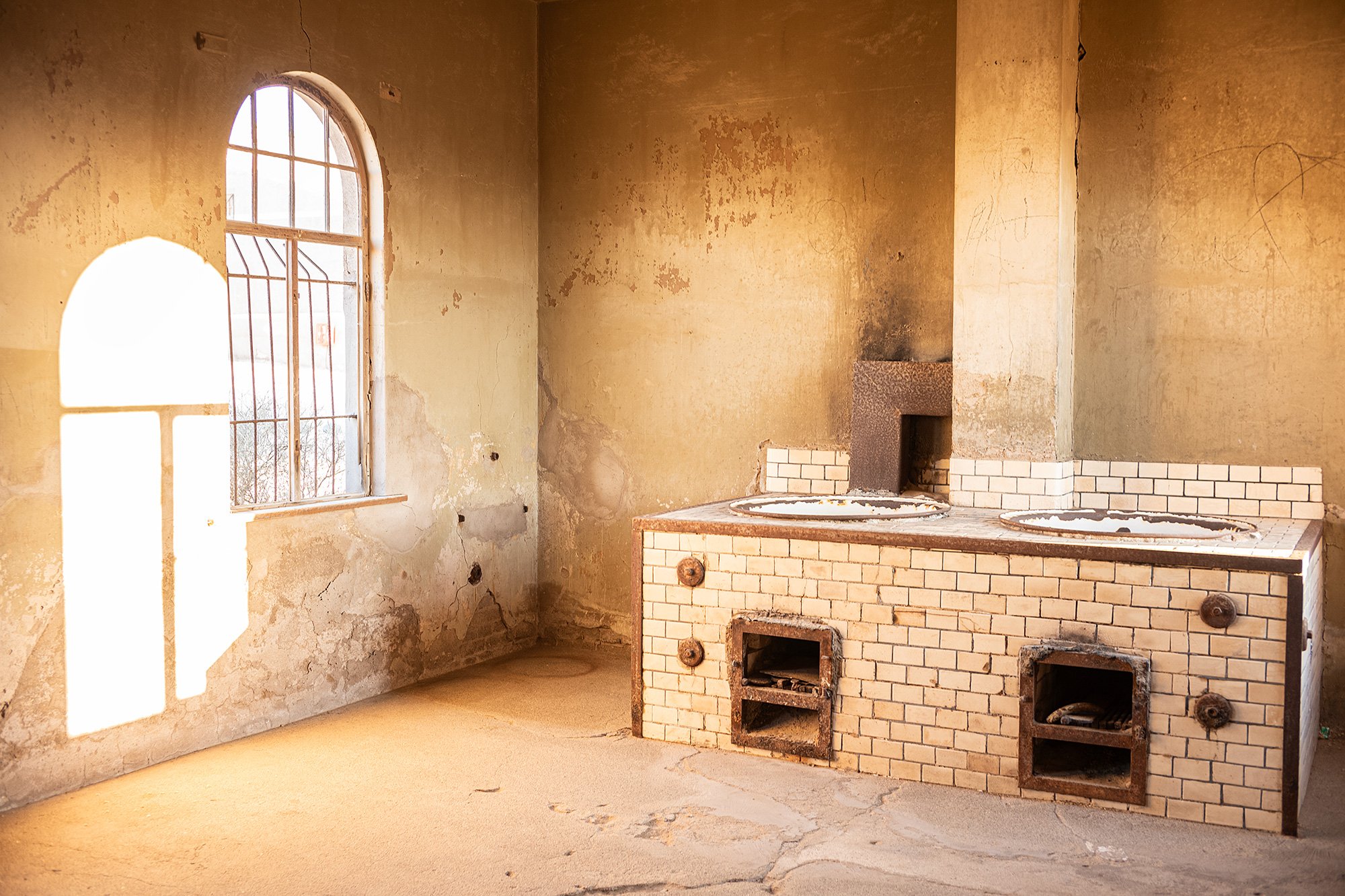

It’s surprising when I stumble upon rooms devoid of sand. I walk through doors, climb small dunes and make my way through the bakeries and the butcher to the exhibits and artifacts in the warehouse.

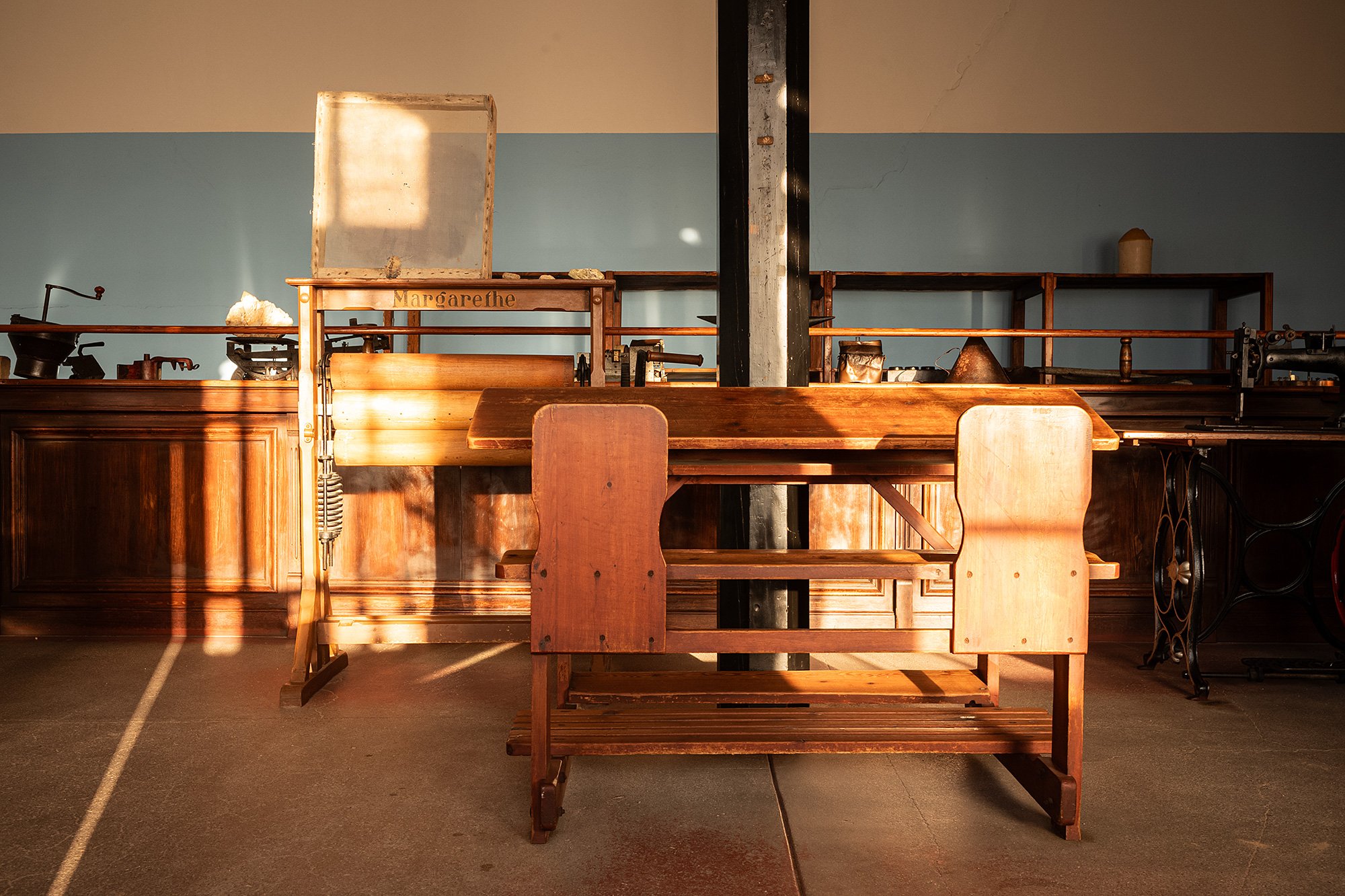
I walk to a nearby building, cilmbing in through a window. I scramble through the rooms, squeezing my way through doorways half-filled with sand. While framing a photo a woman appears suddenly in a doorway. Her sudden presence scares me, mine her. We laugh once we catch our breaths and I welcome her into the home.

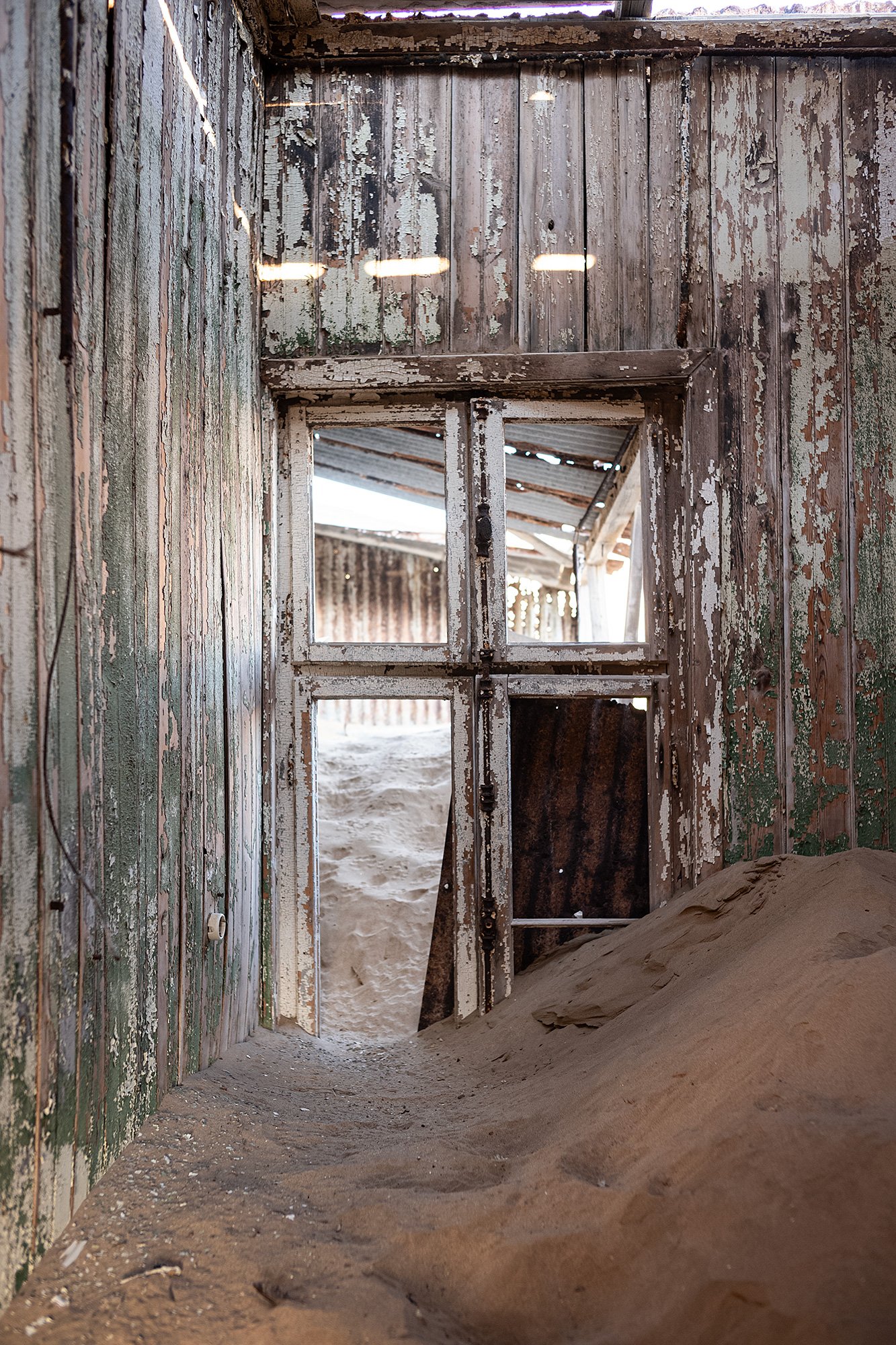
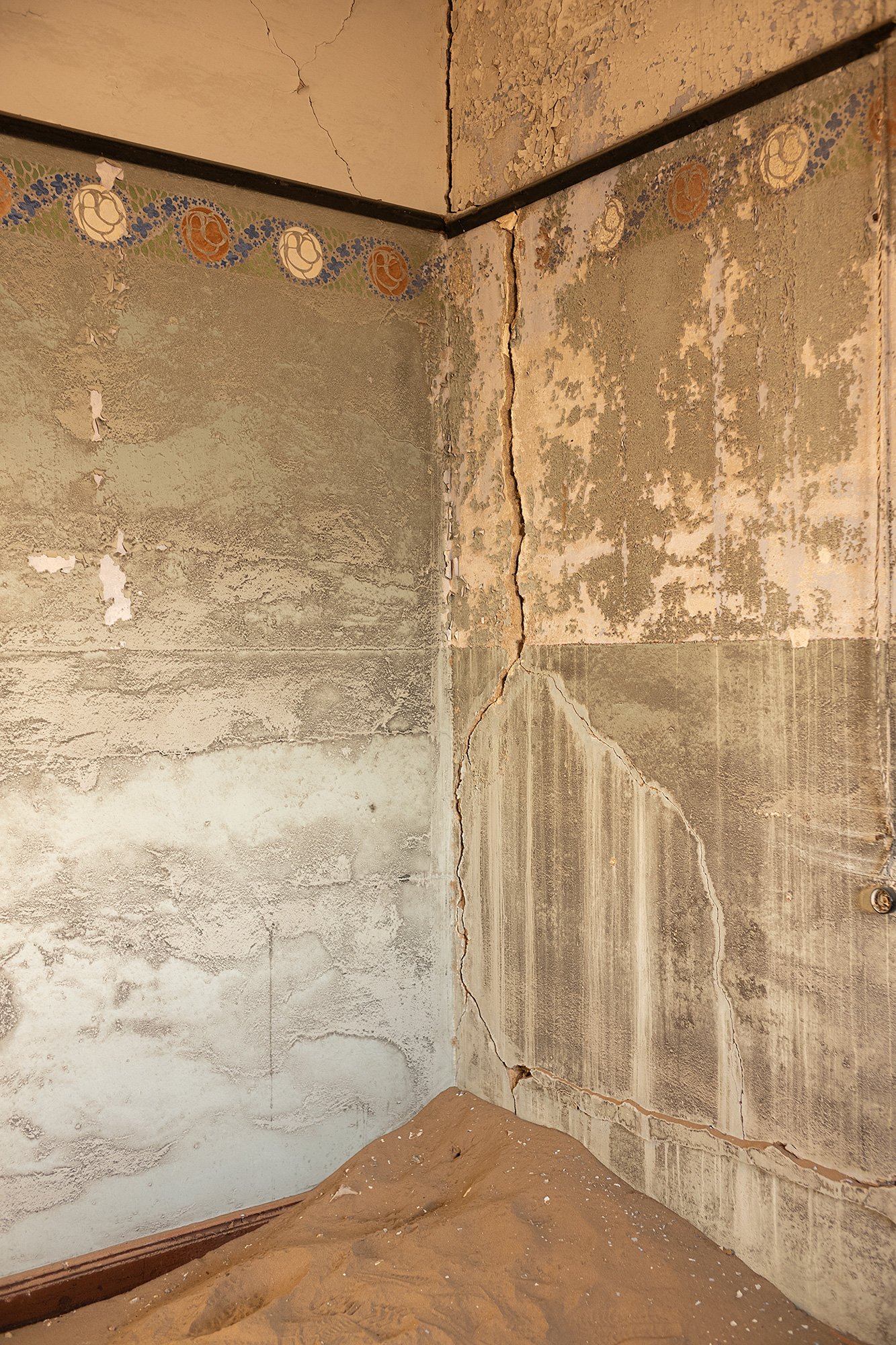

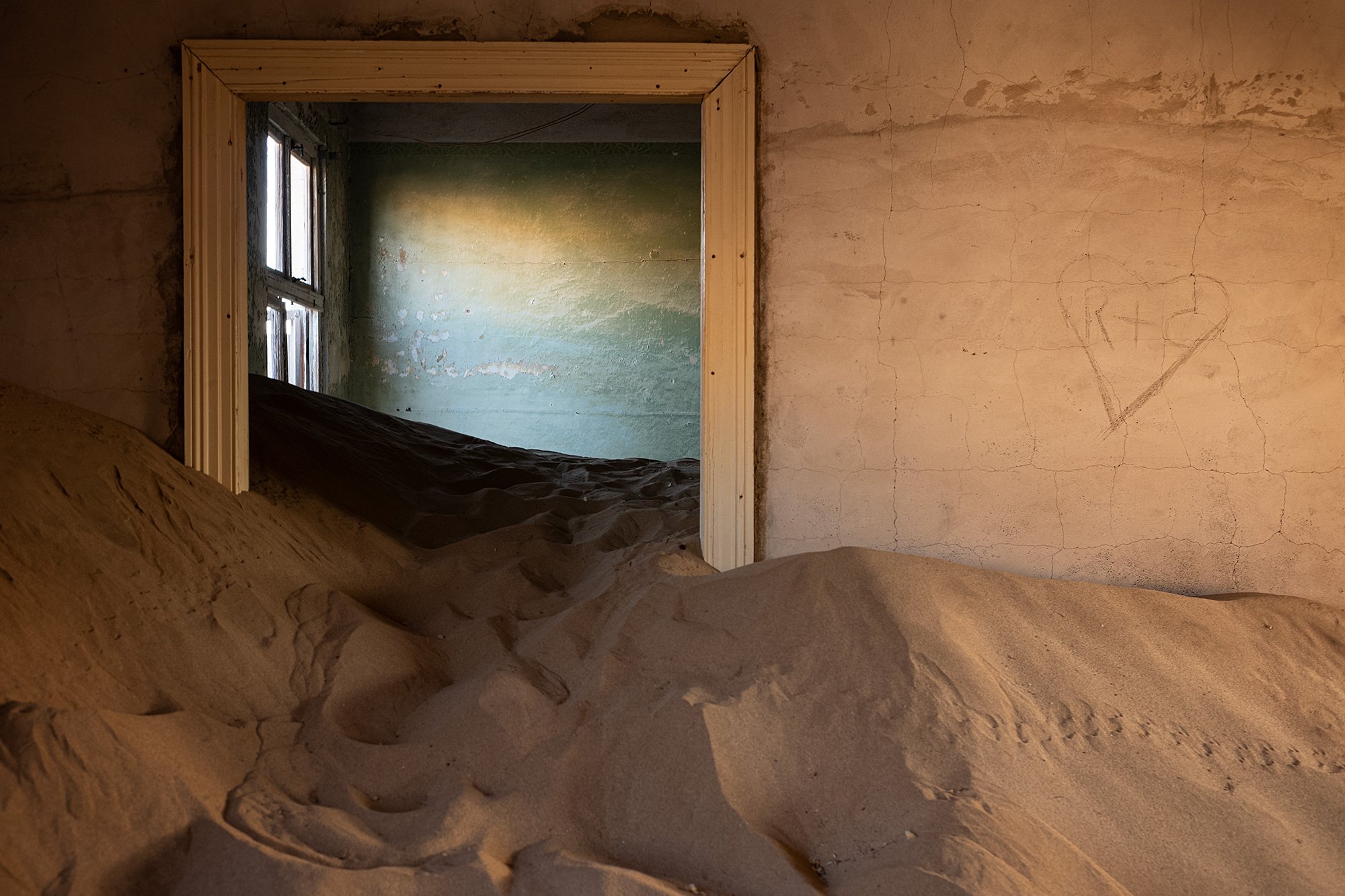
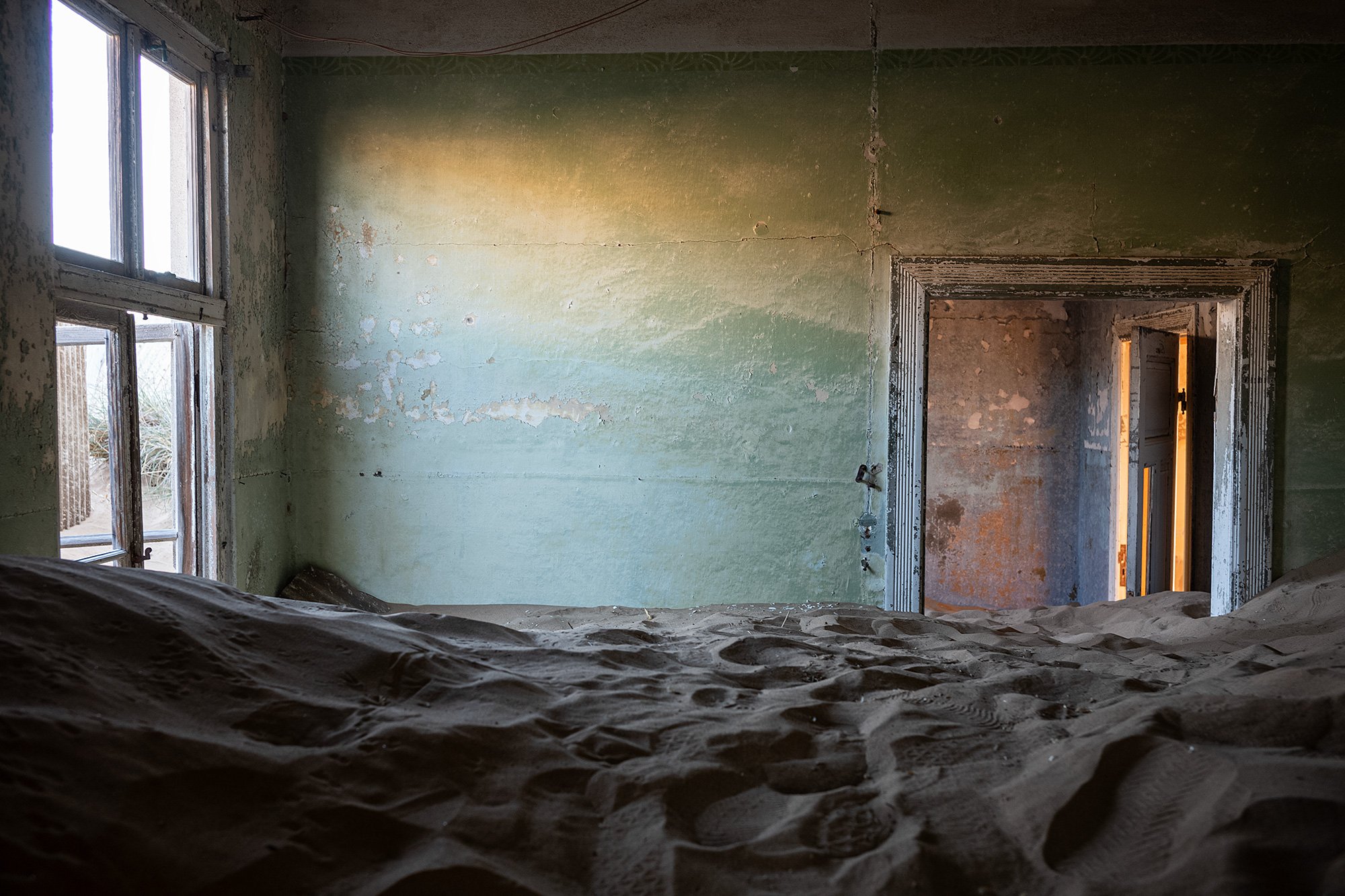
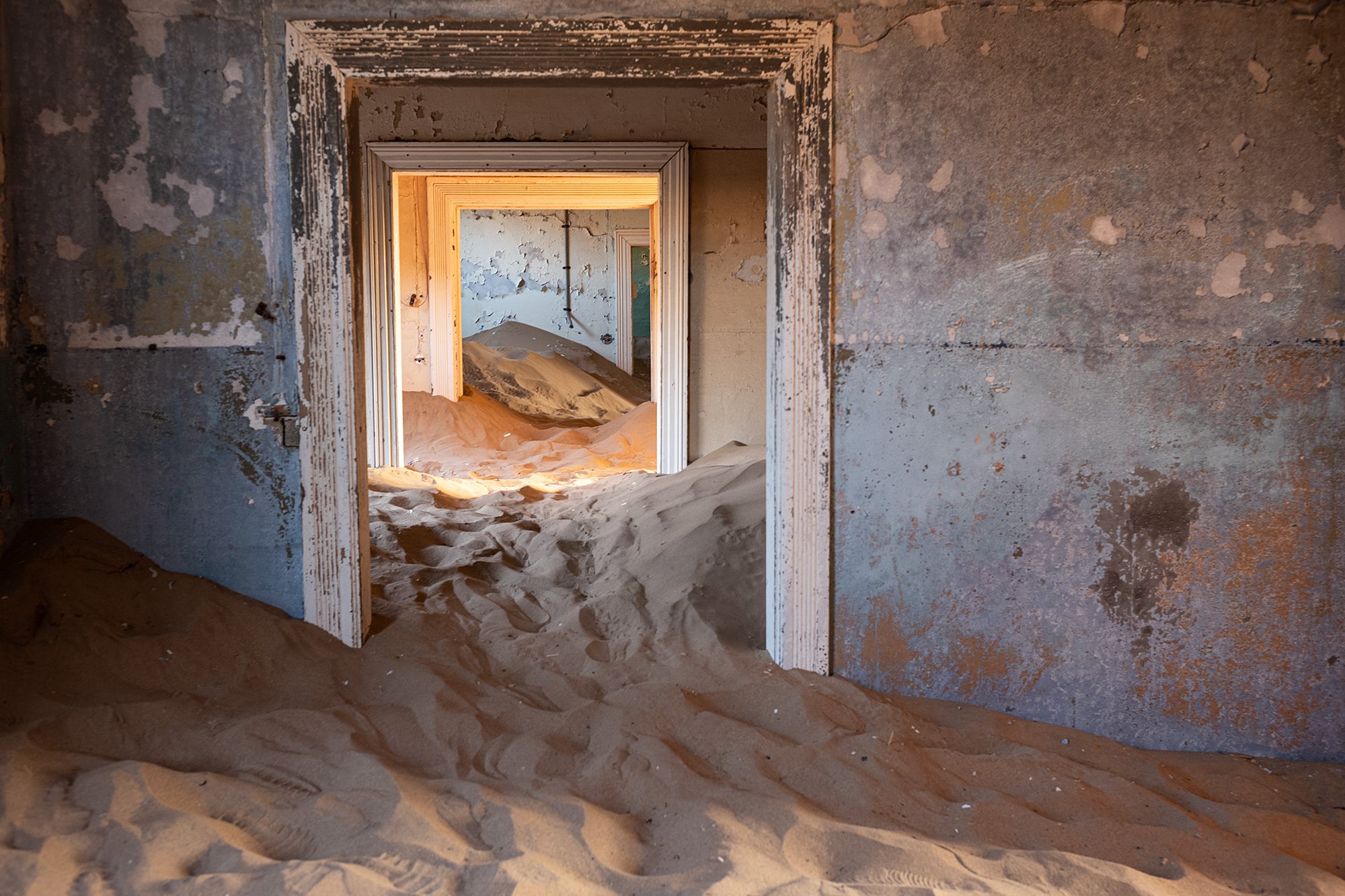
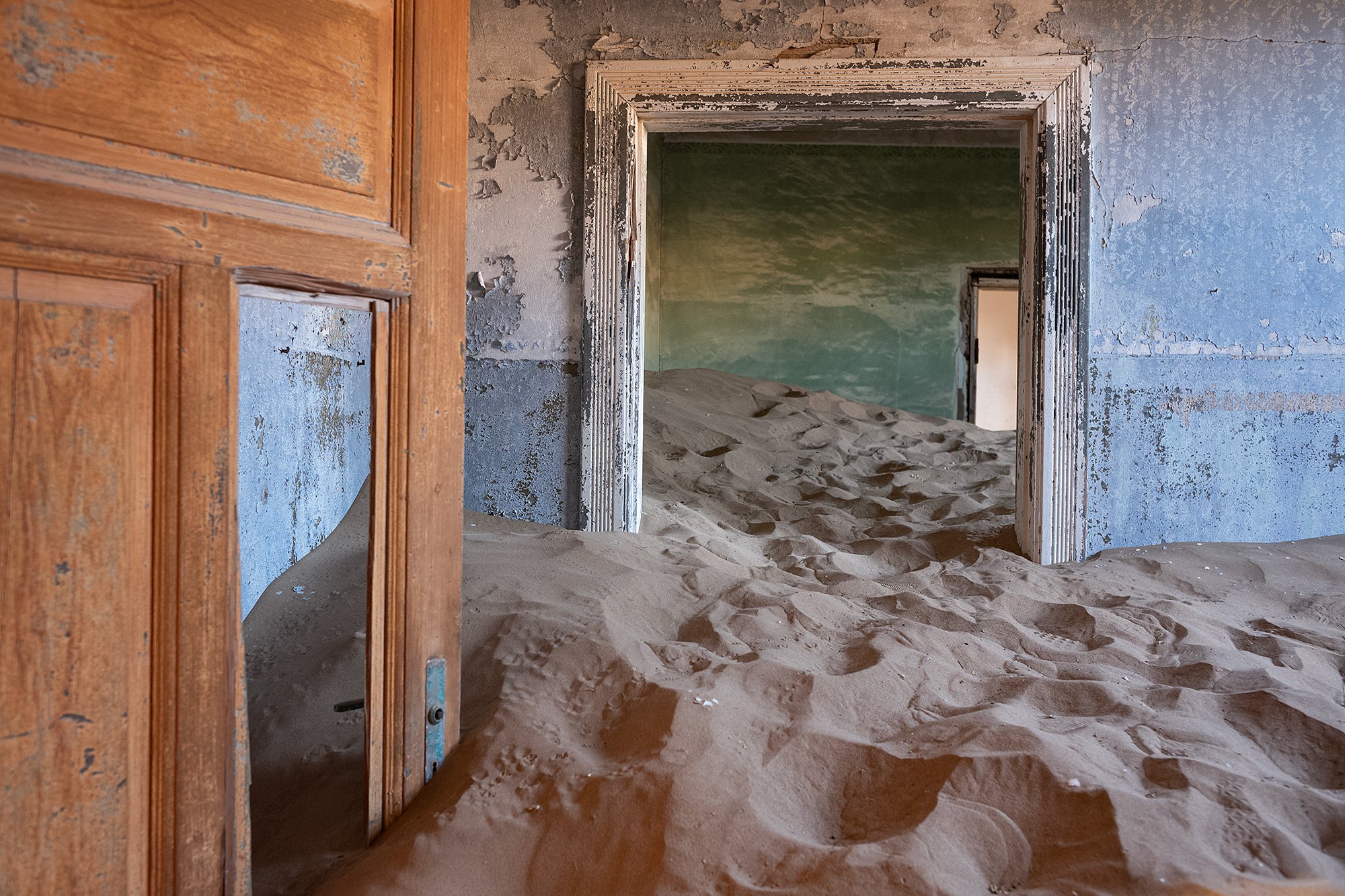

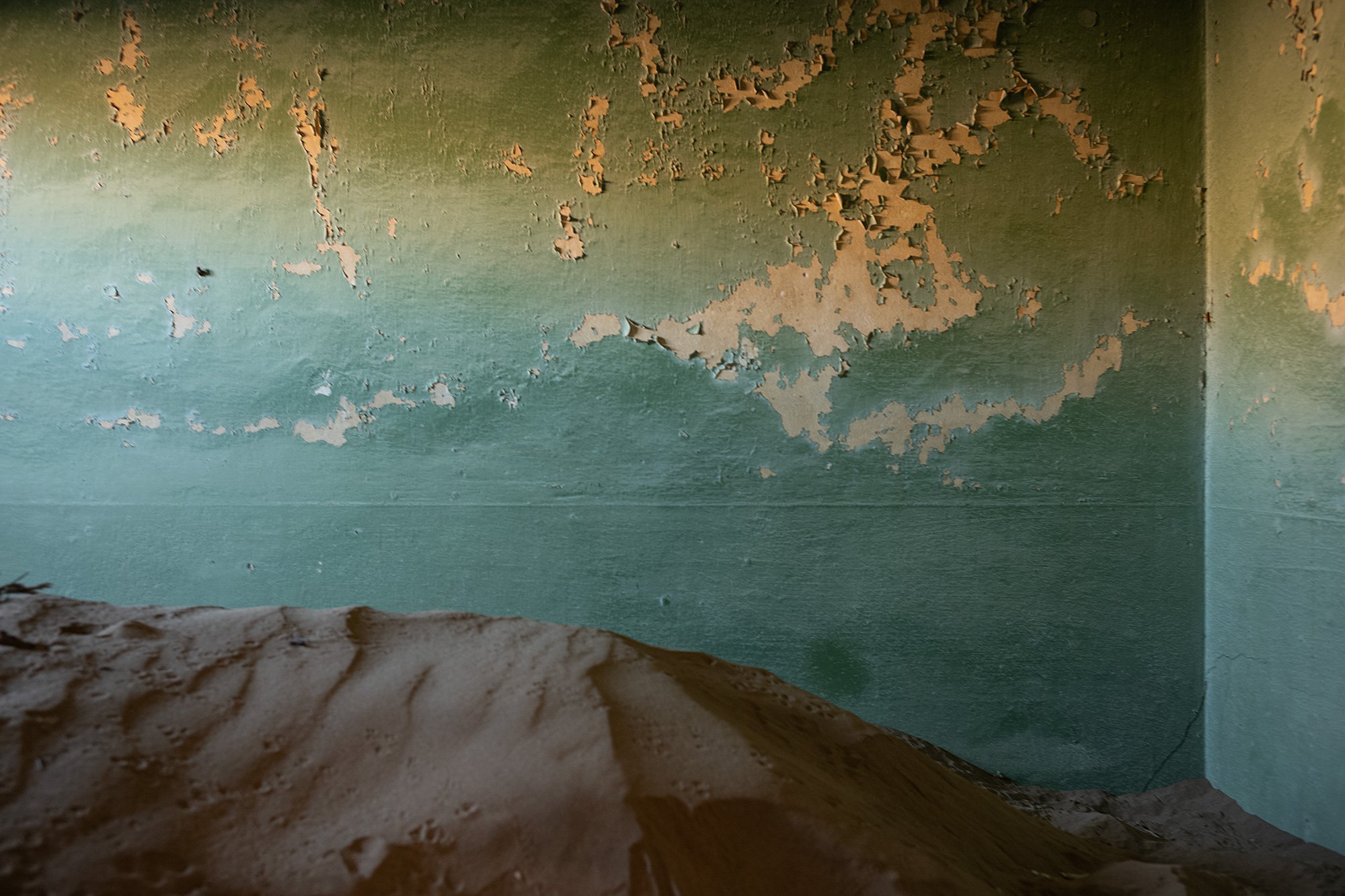
Outside of the hospital I run into Anne’s husband. They’re from Belgium. He’s looking for his wife and I tell him I just saw her in one of the smaller homes alongside the warehouse. He speaks little English and I do what I can with the French I know. We chat about Namibia and our travels until we see her emerge from the window of one of the buildings. I invite them to enter the hospital ahead of me.
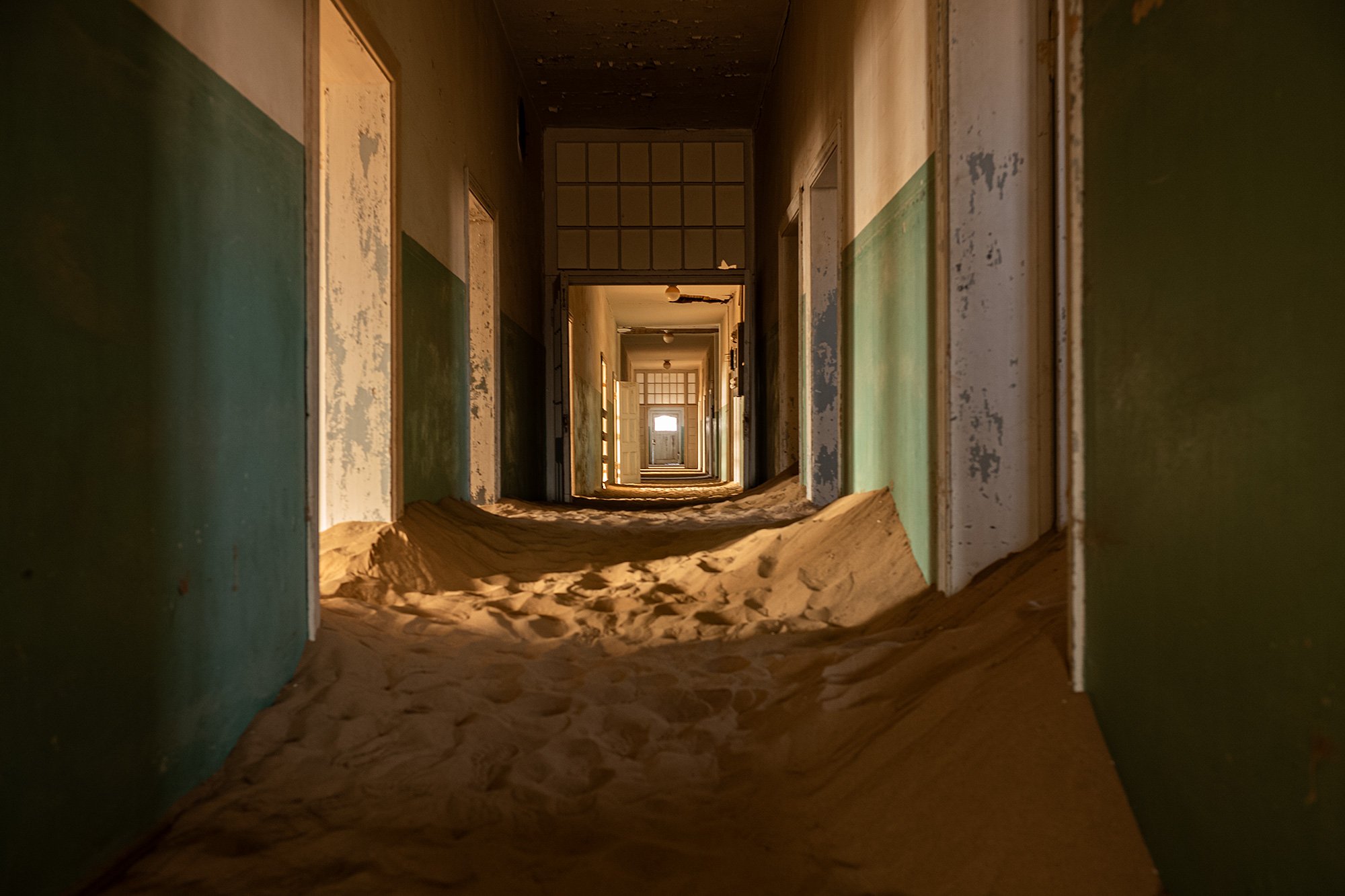
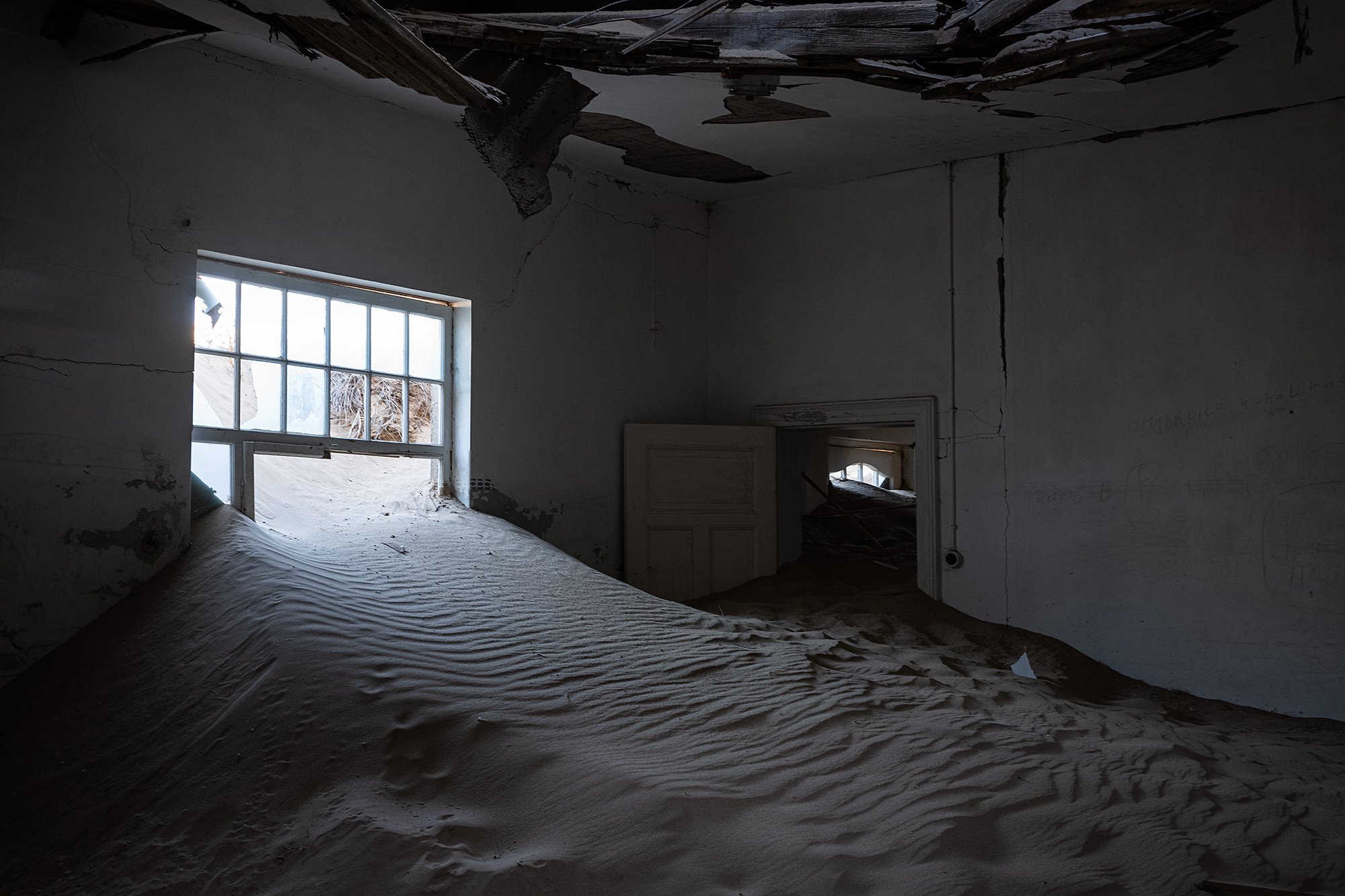
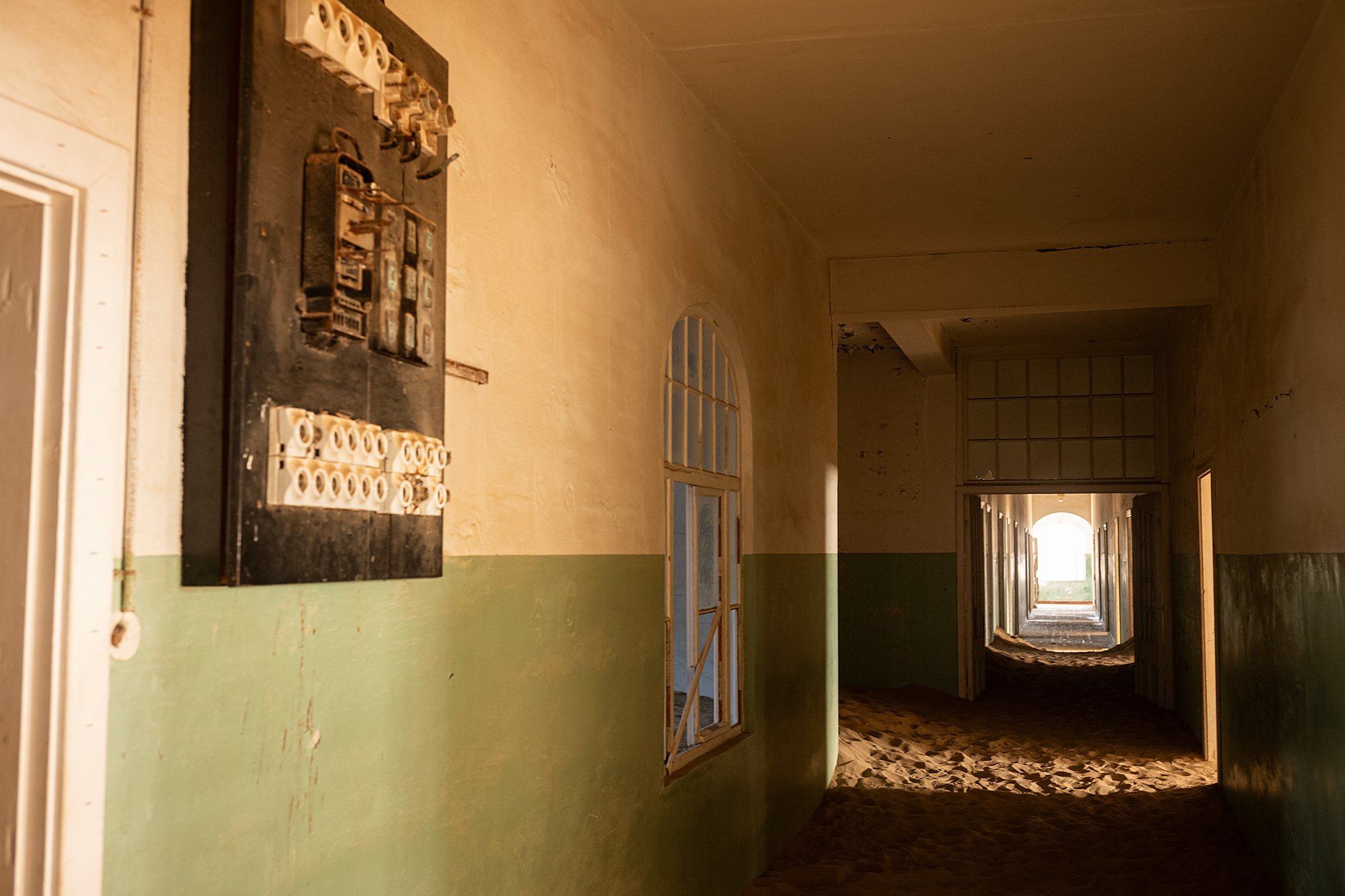


Outside I continue to explore the various row homes, entering where I can and scrambling through the rooms, sometimes on all fours in order to make it through a door or a window.
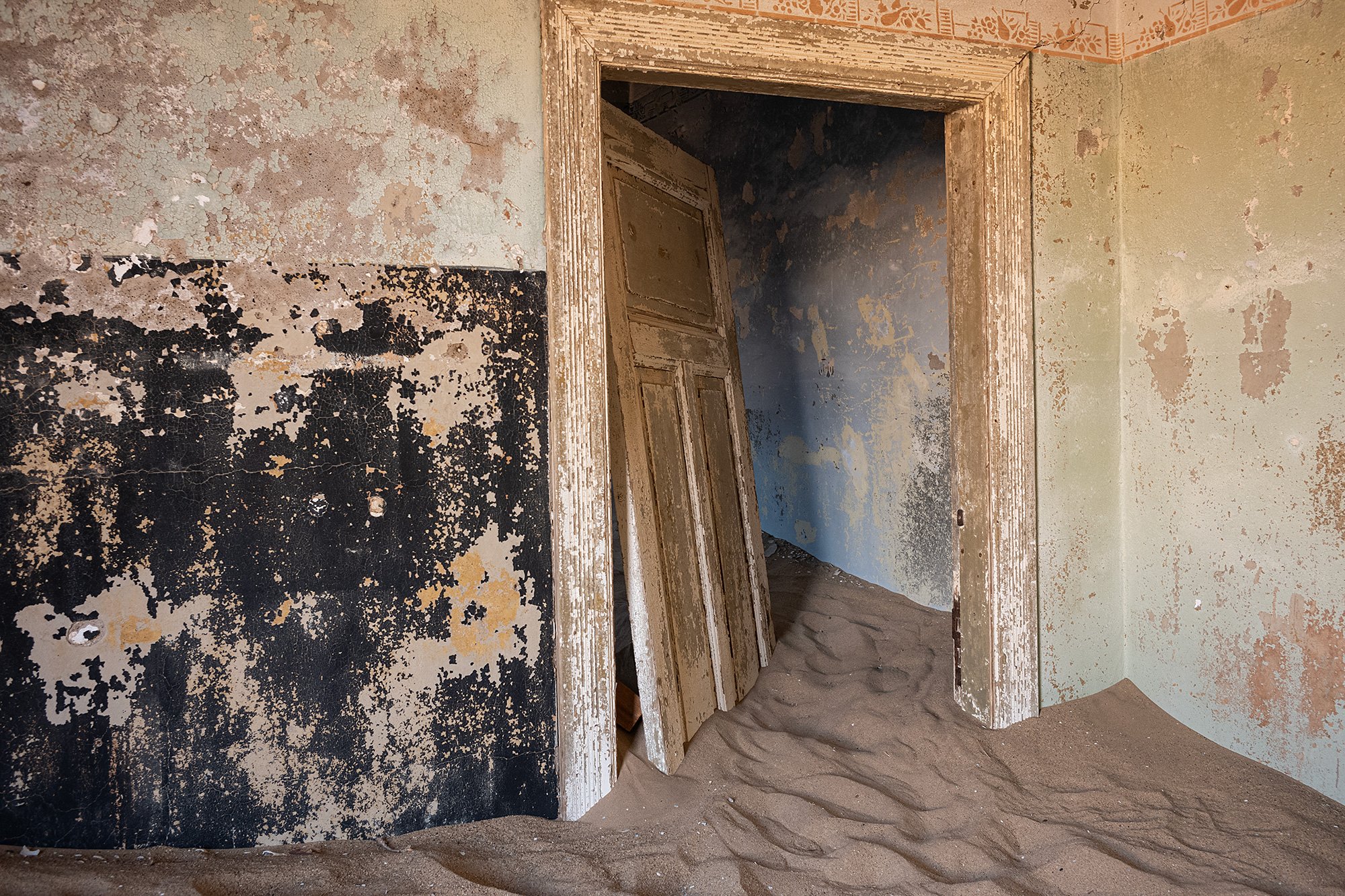

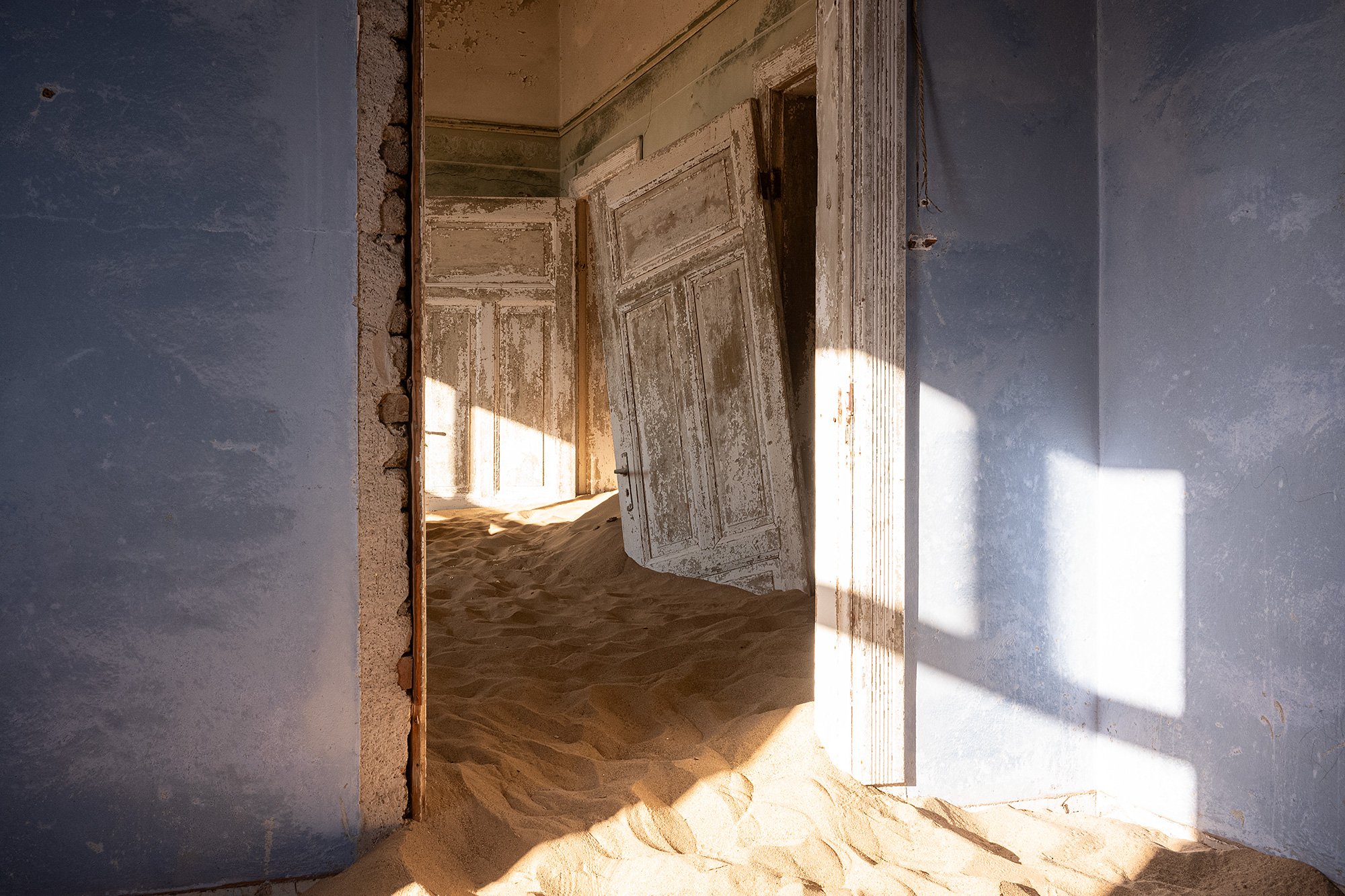

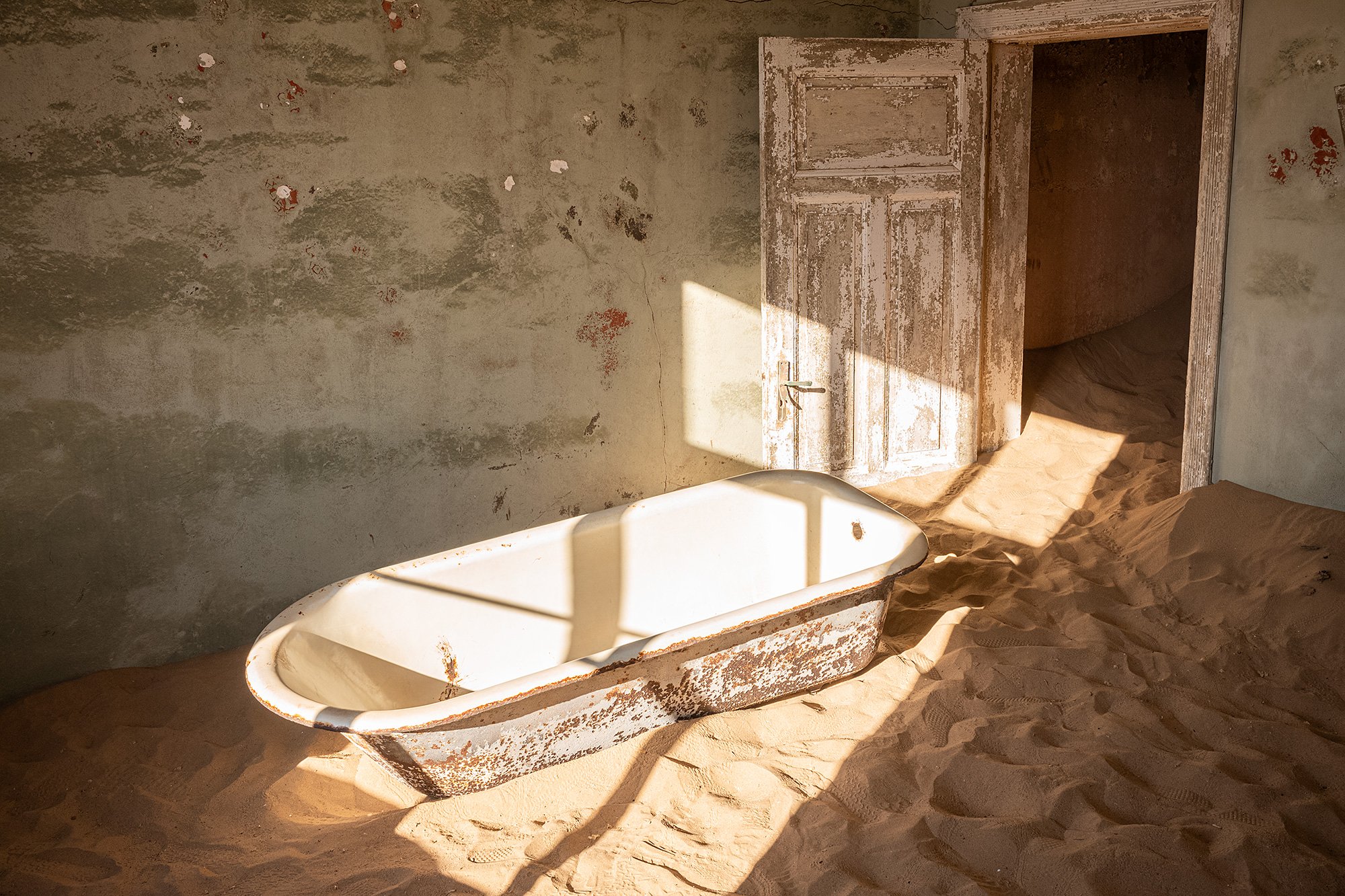
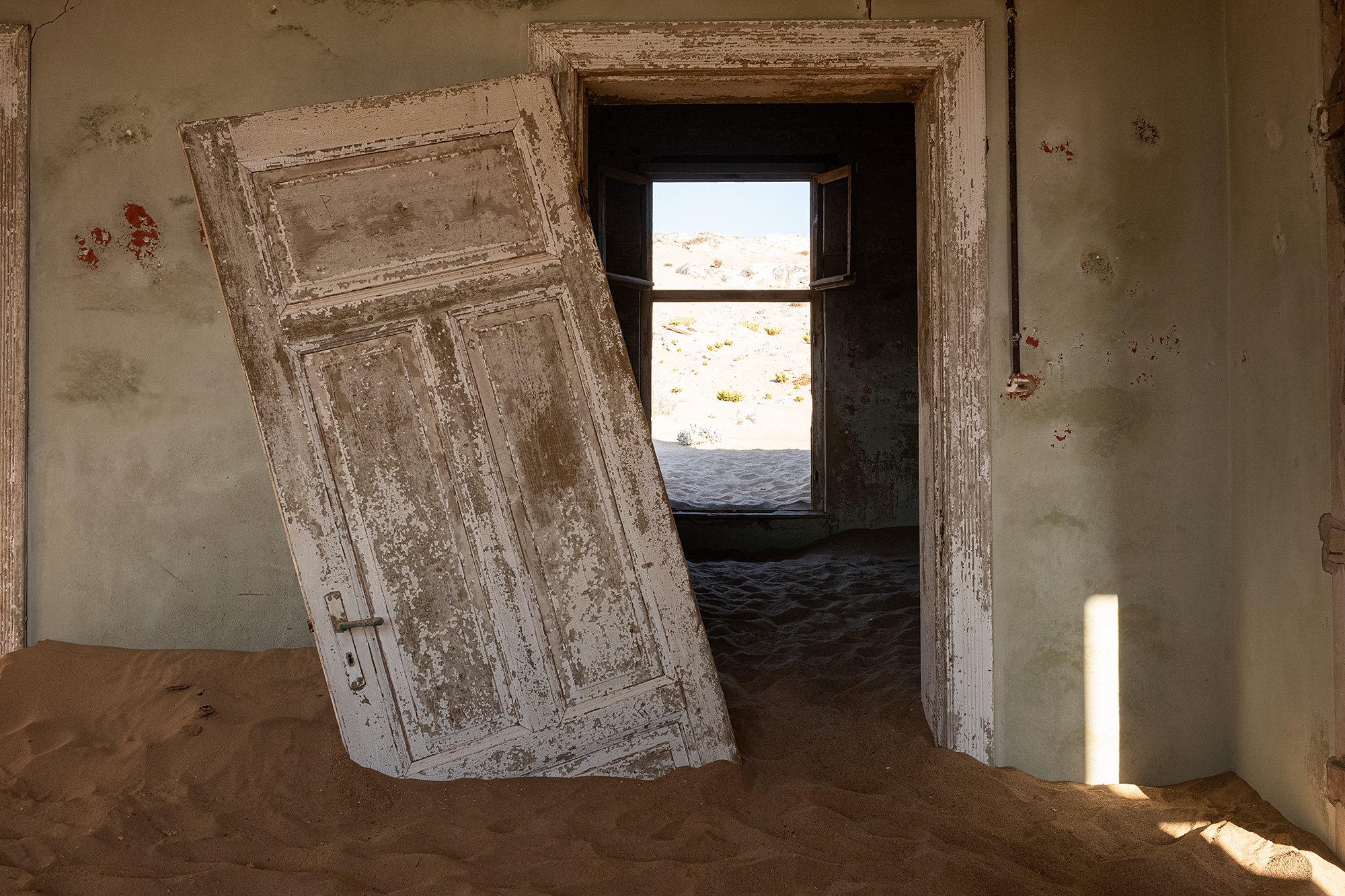
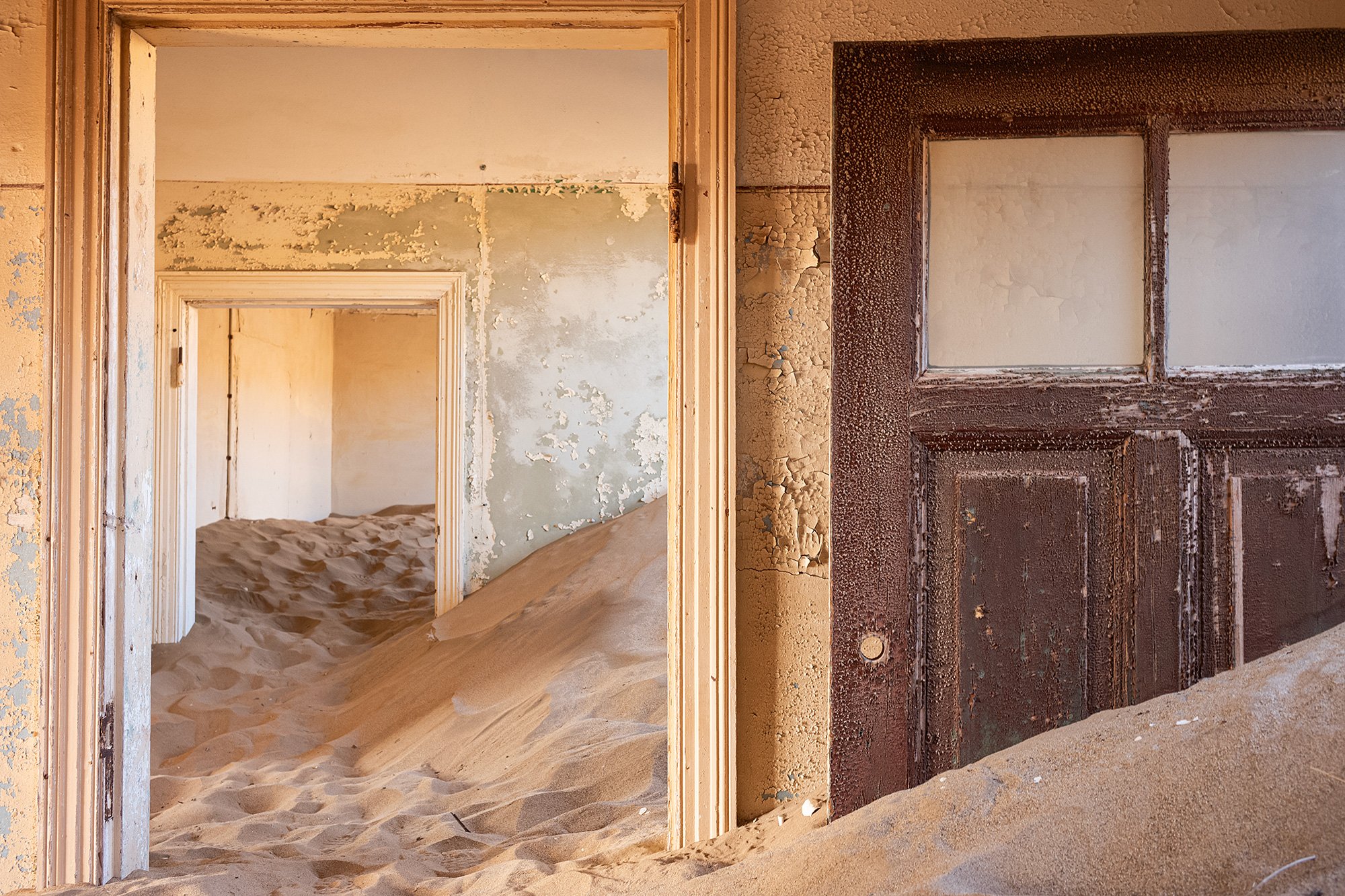

In one building I stop to take a photo out of the window at the town itself, a series of grey buildings dotting the inhospitable landscape.
The town is named after a transport driver named Johnny Coleman who abandoned his ox wagon on a small incline opposite the settlement during a sandstorm. The name of the town is Afrikaans for “Coleman's peak.” The area was settled by German miners after diamonds were discovered in the area and the village was built in the architectural style of a German town, with a hospital, ballroom, power station, school, skittle-alley, theatre and sport-hall, casino, ice factory, and the first x-ray-station in the southern hemisphere (used to check for swallowed diamonds). The village also introduced the first tram to Africa.

Inside the houses, I continue my explorations, imagining the families and the lives they held. I take a particular interest in the stenciling done along the molding of some of the rooms and start to look for it in every room I enter.
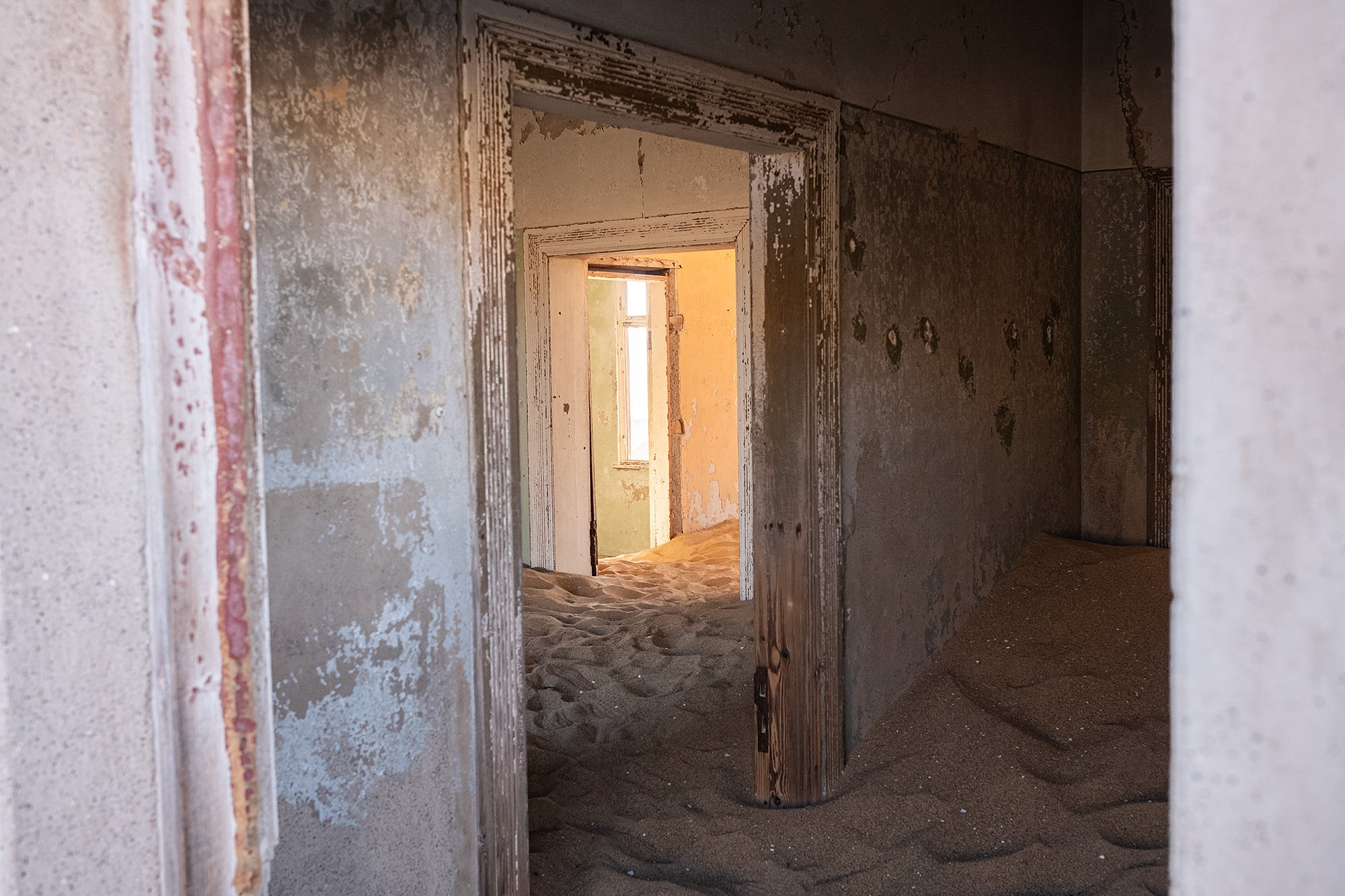
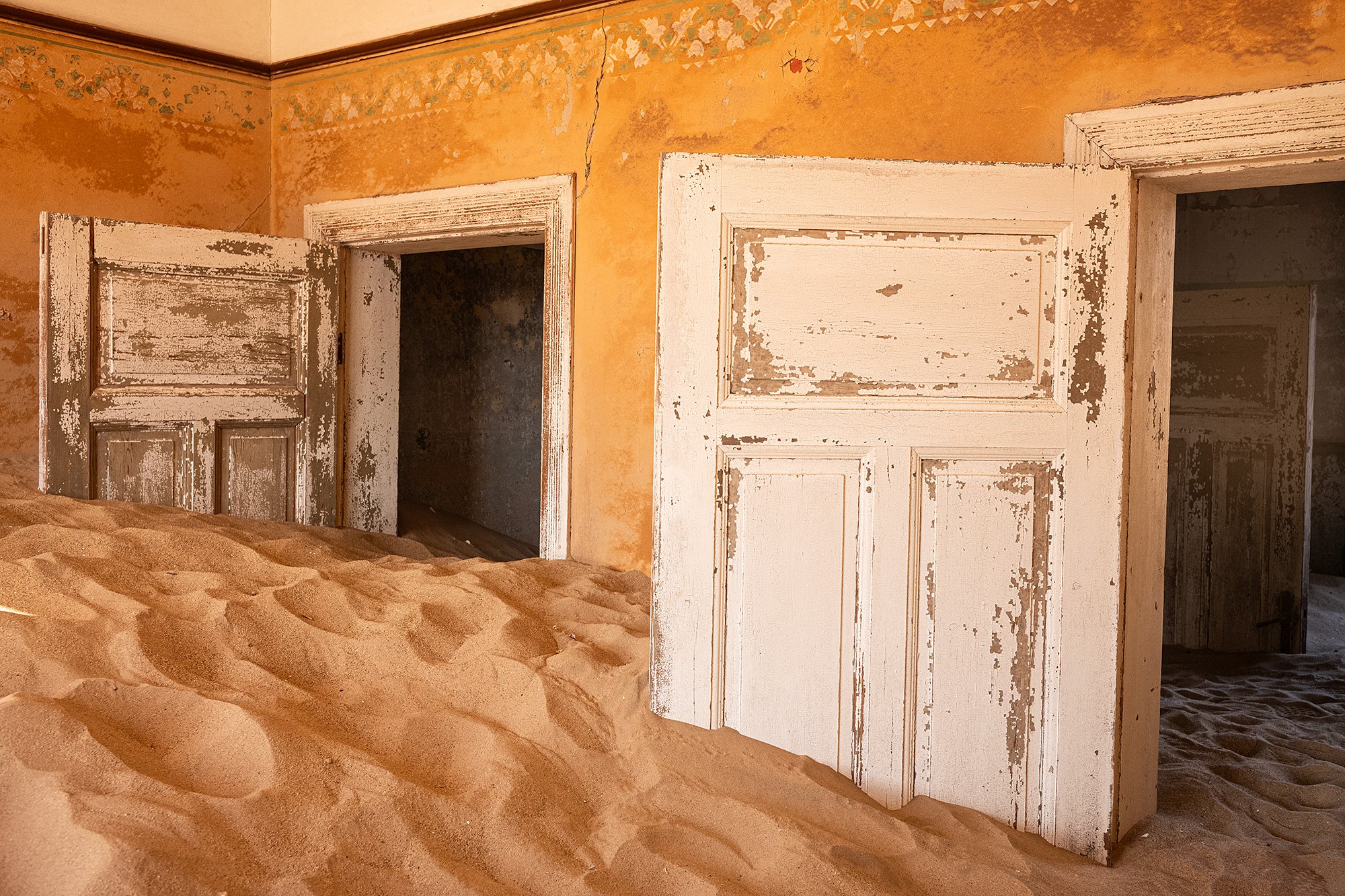
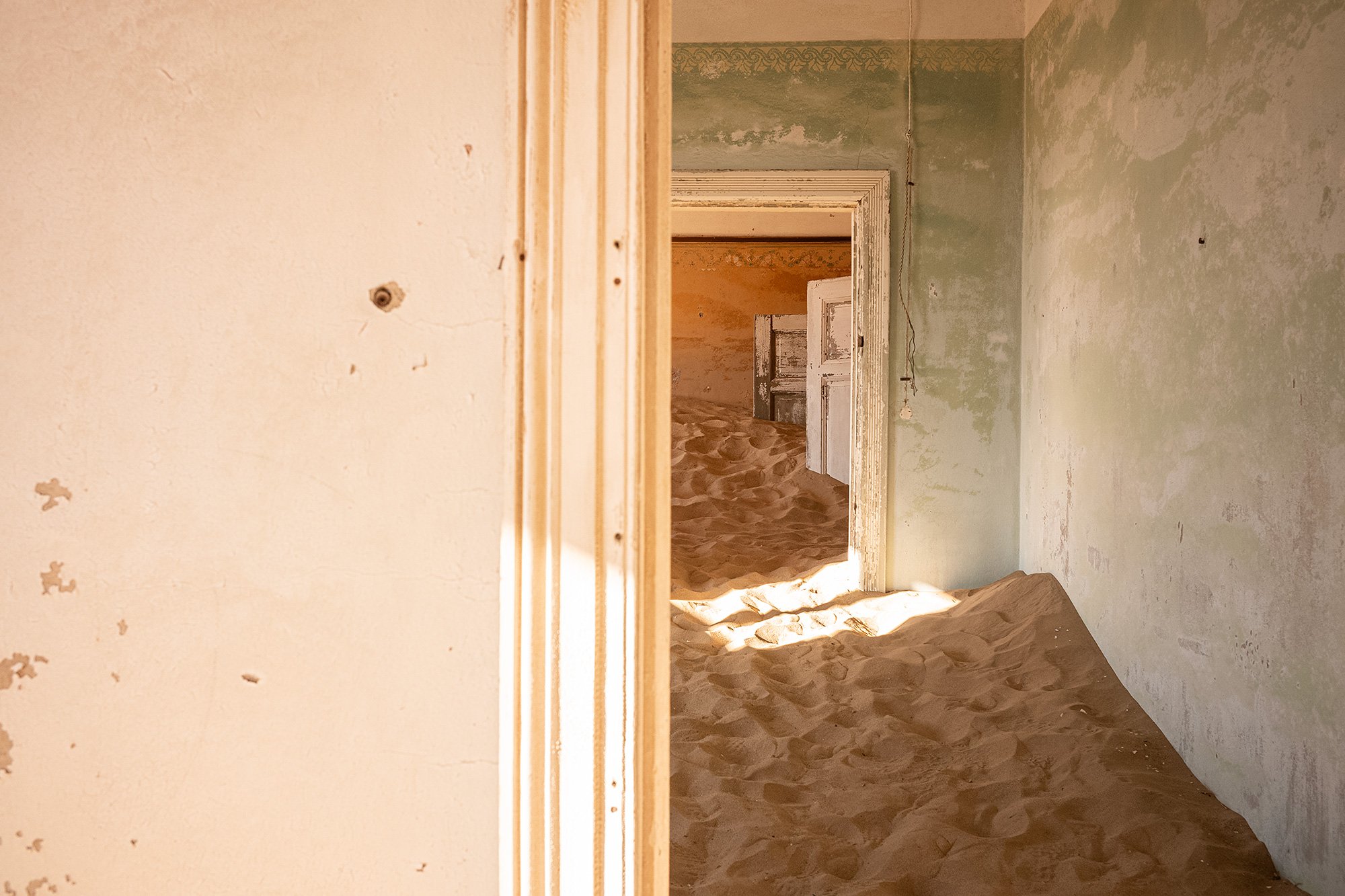
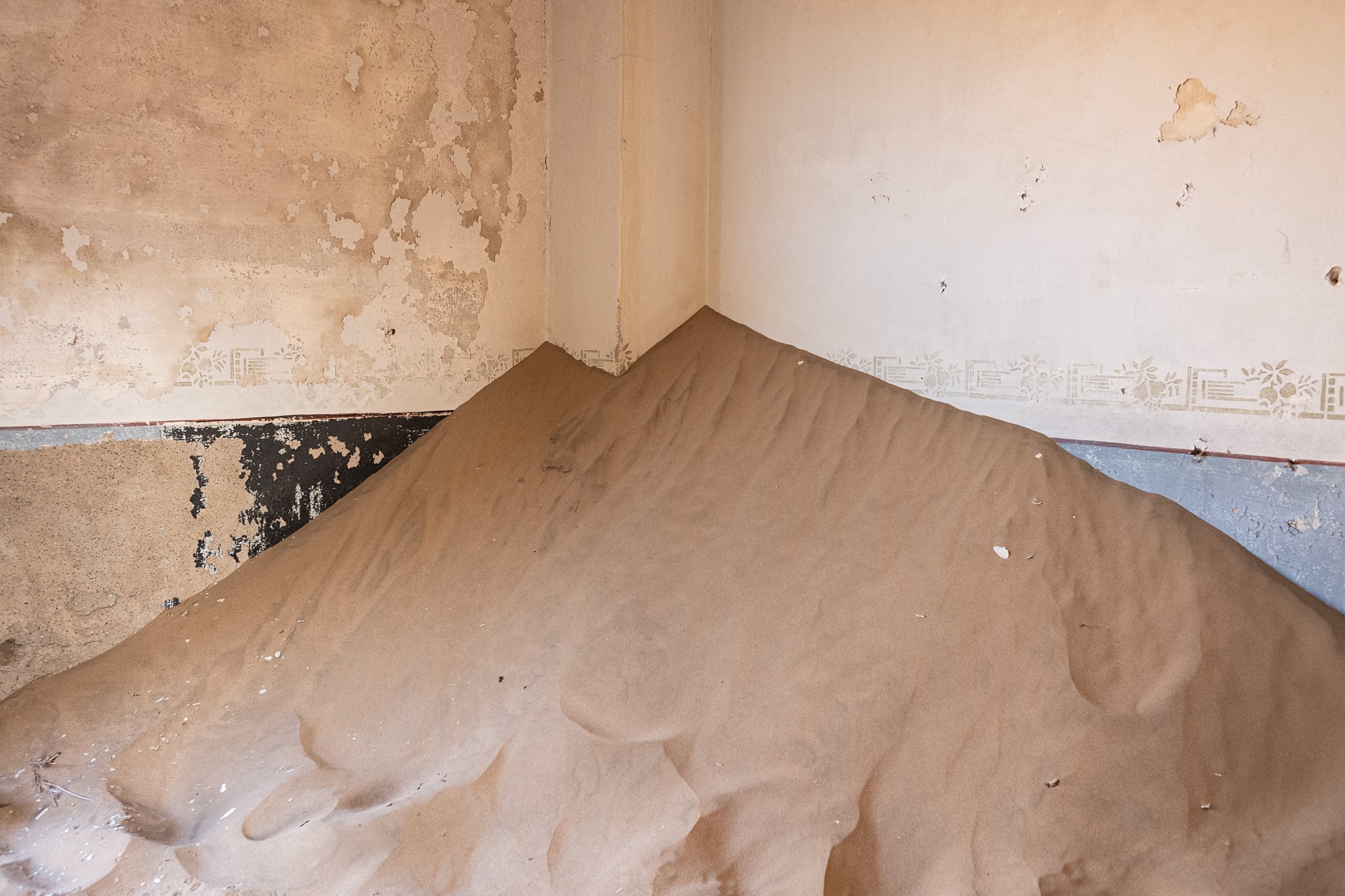
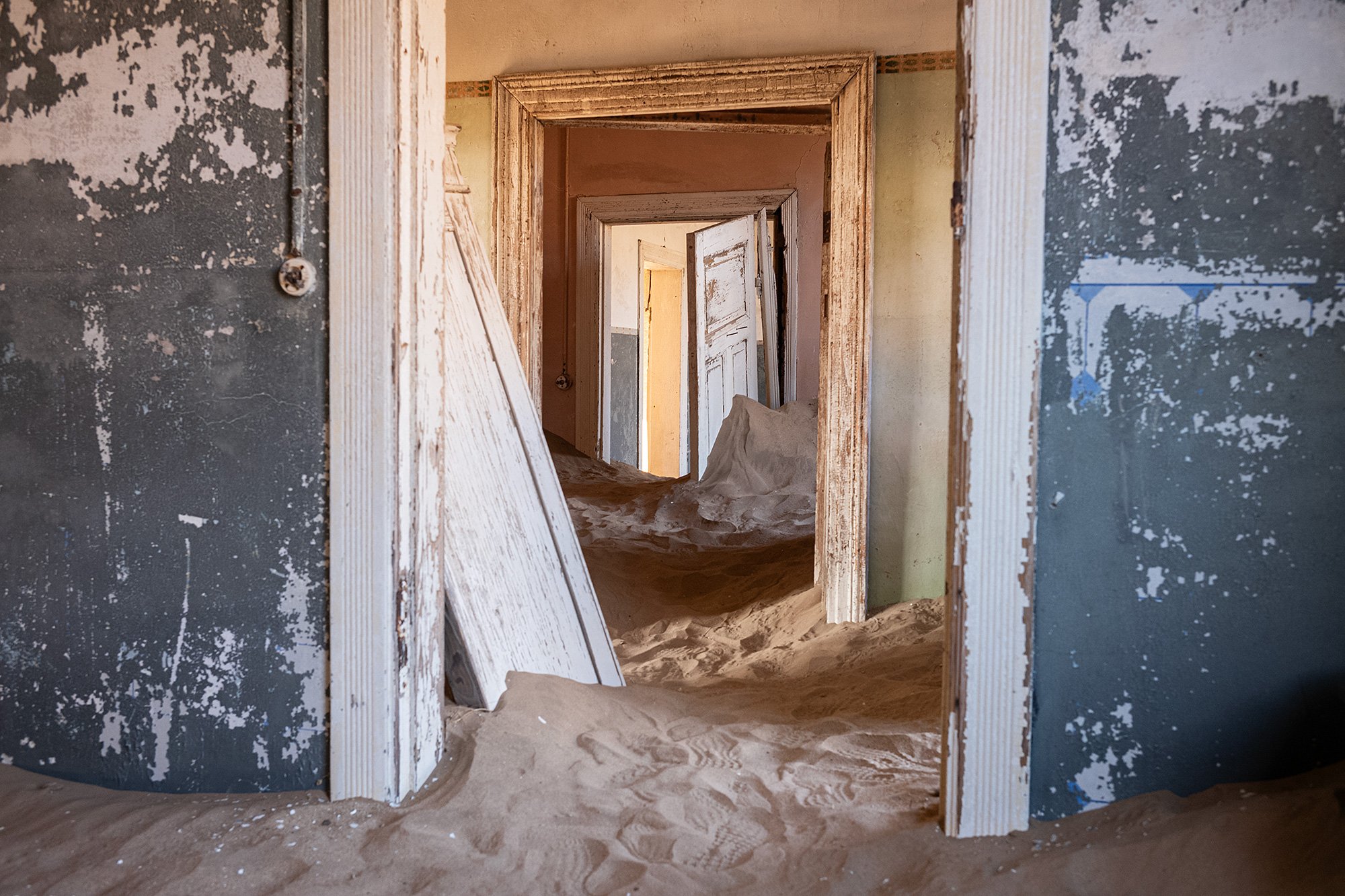

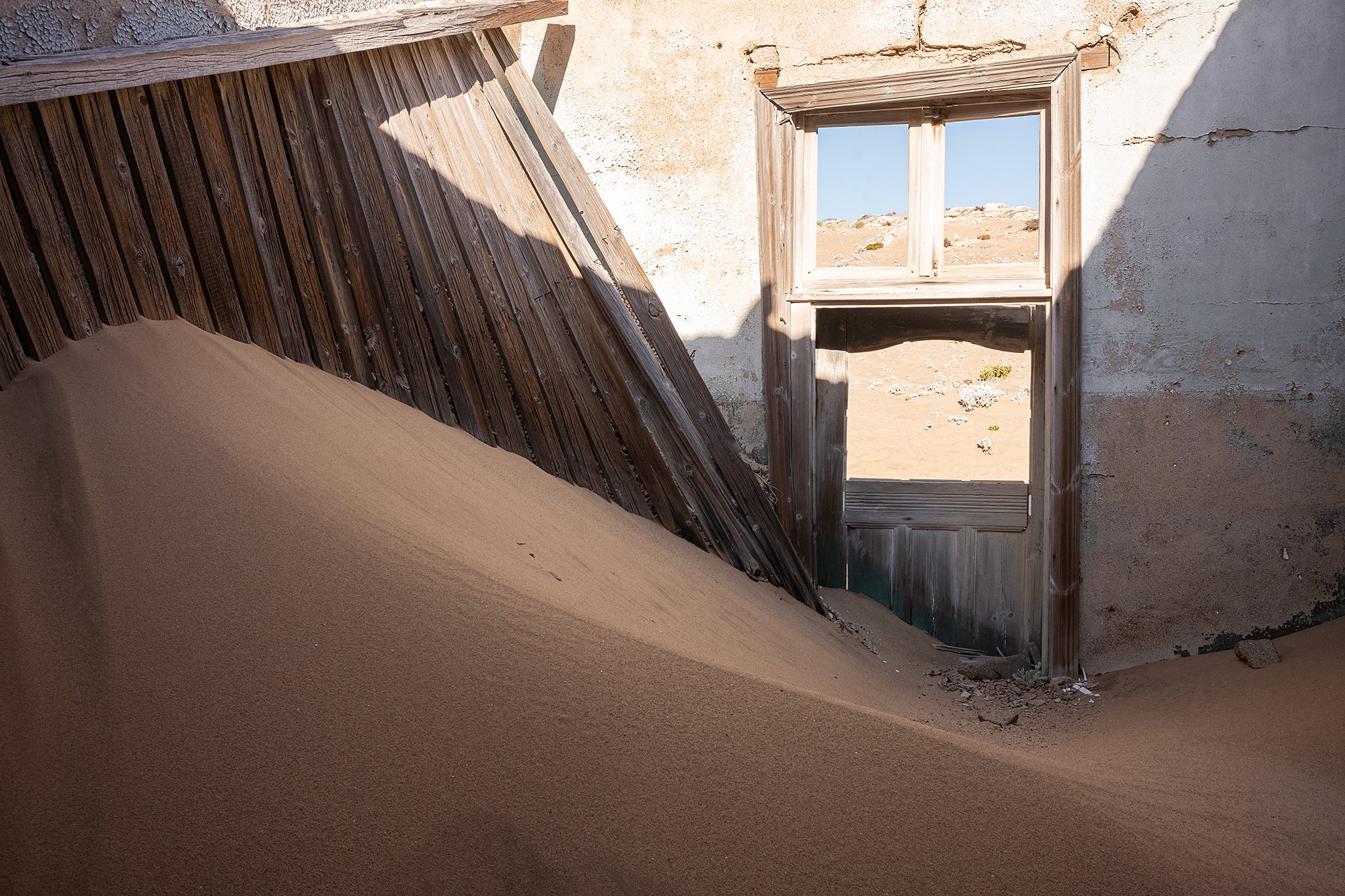
Once again outside, I run into a couple exploring the buildings in a counter-clockwise direction. They warn me of snakes hiding in the corners of the rooms. They’ve encountered one themselves, which gave them a scare. From then on, I check all the corners before I enter a room and search the sand for signs.

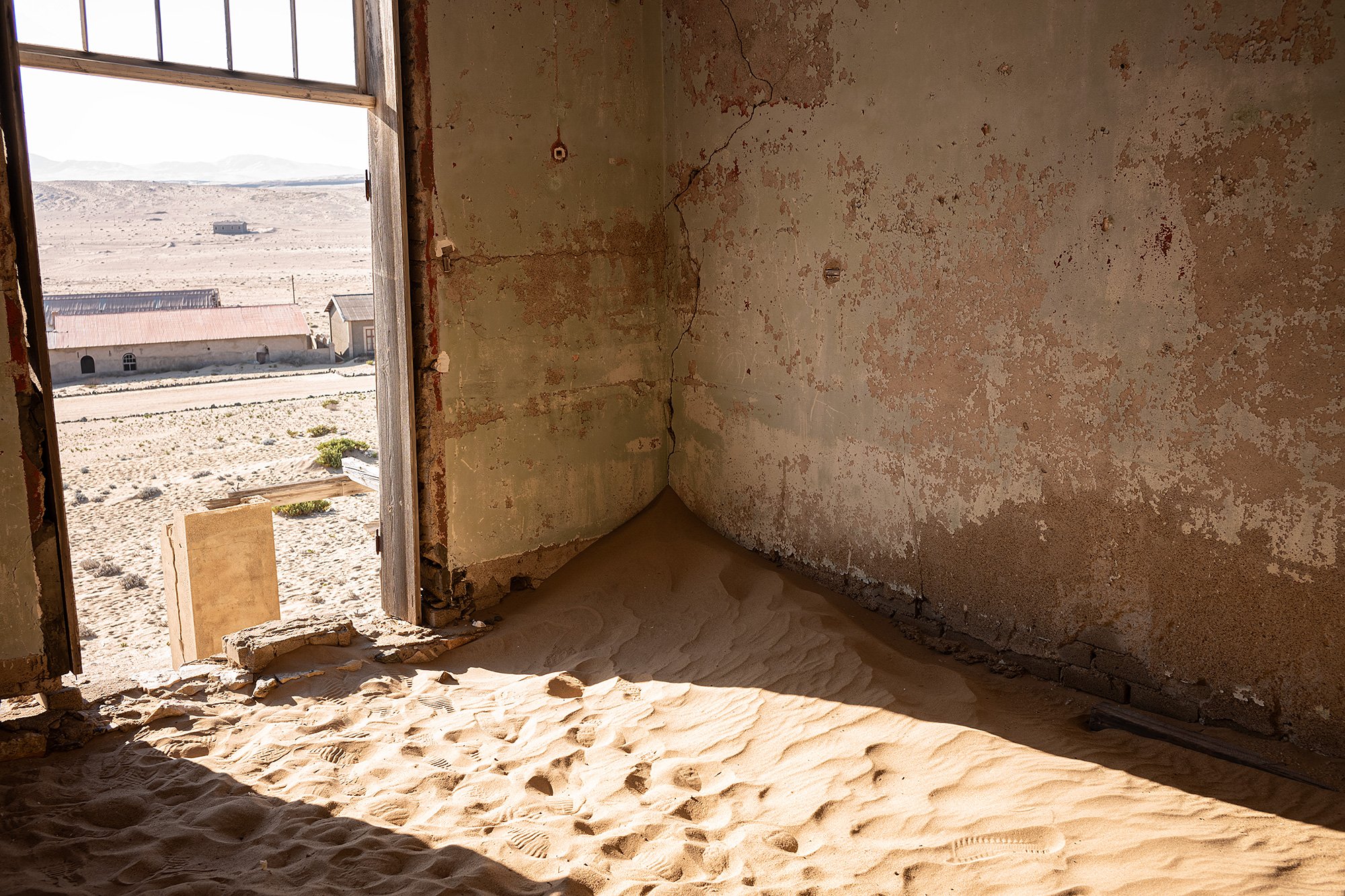
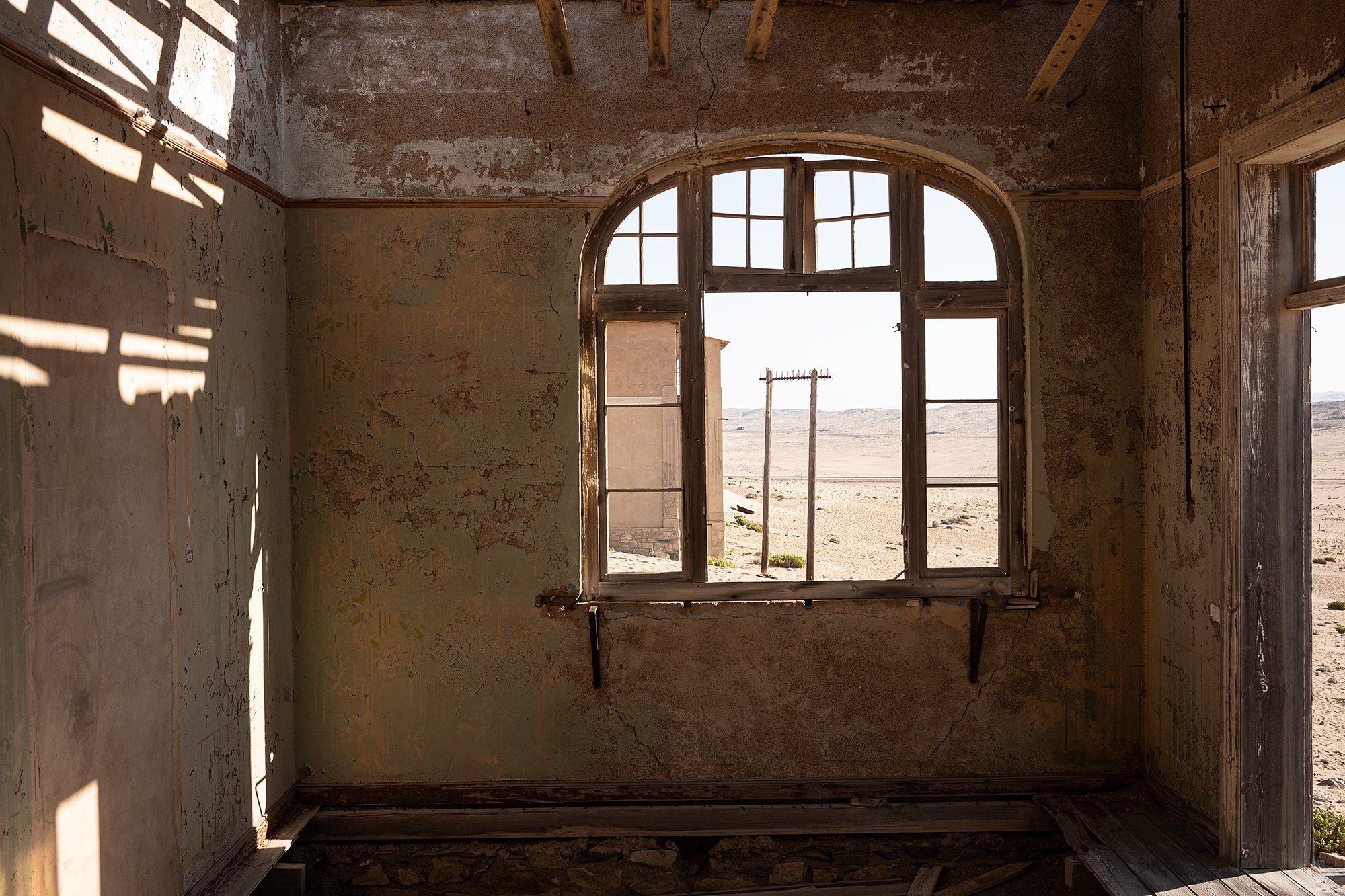
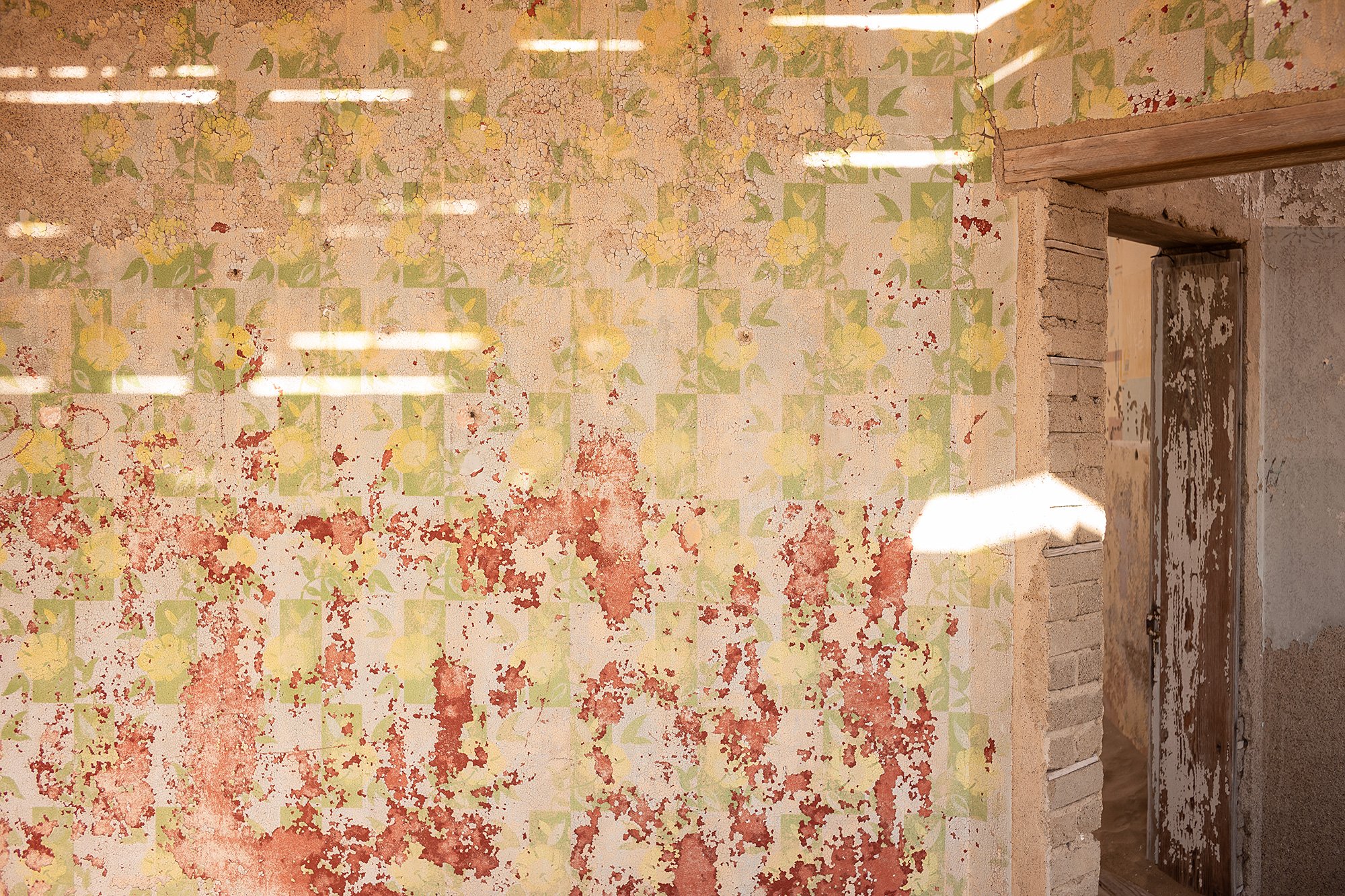
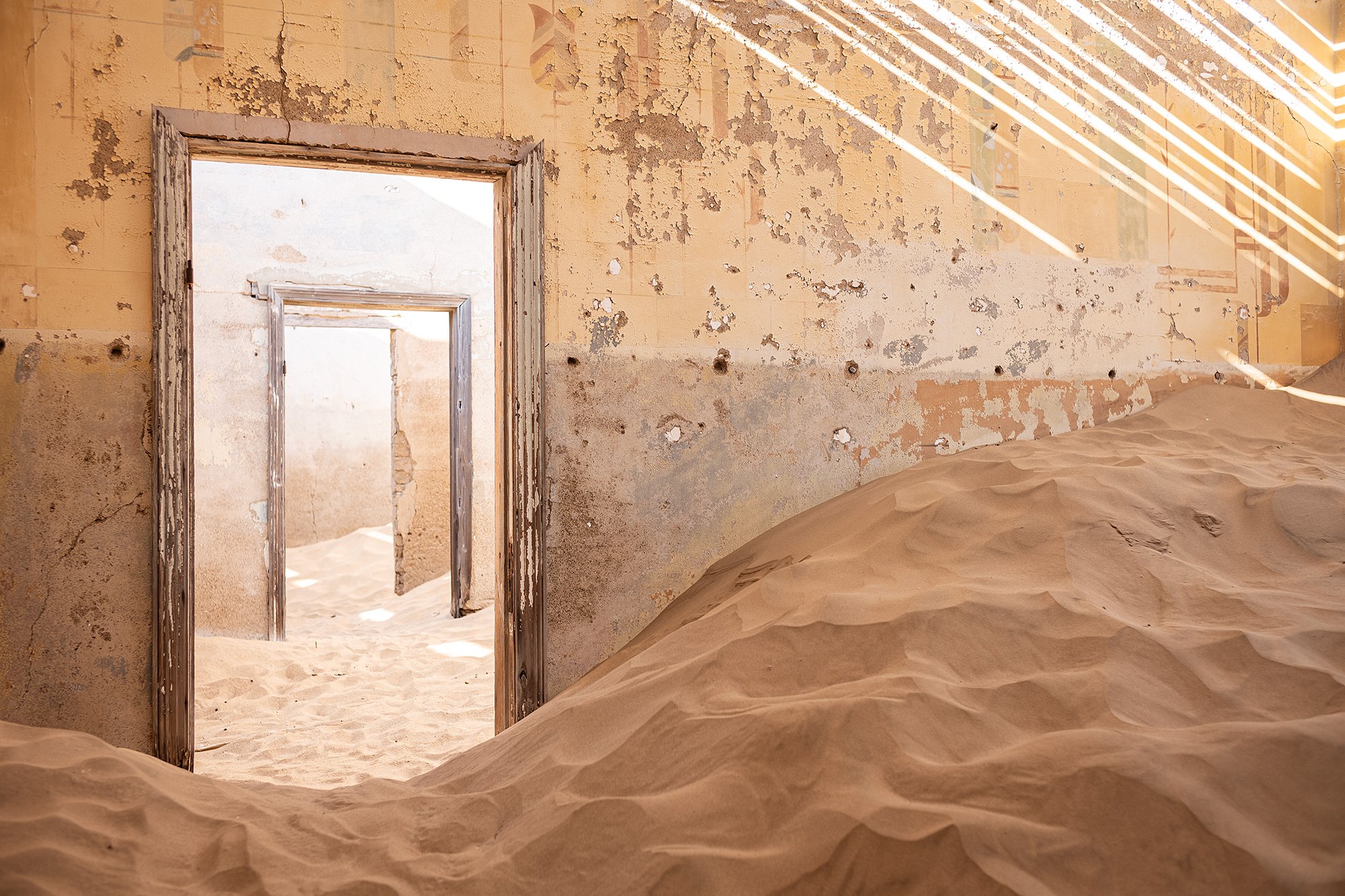
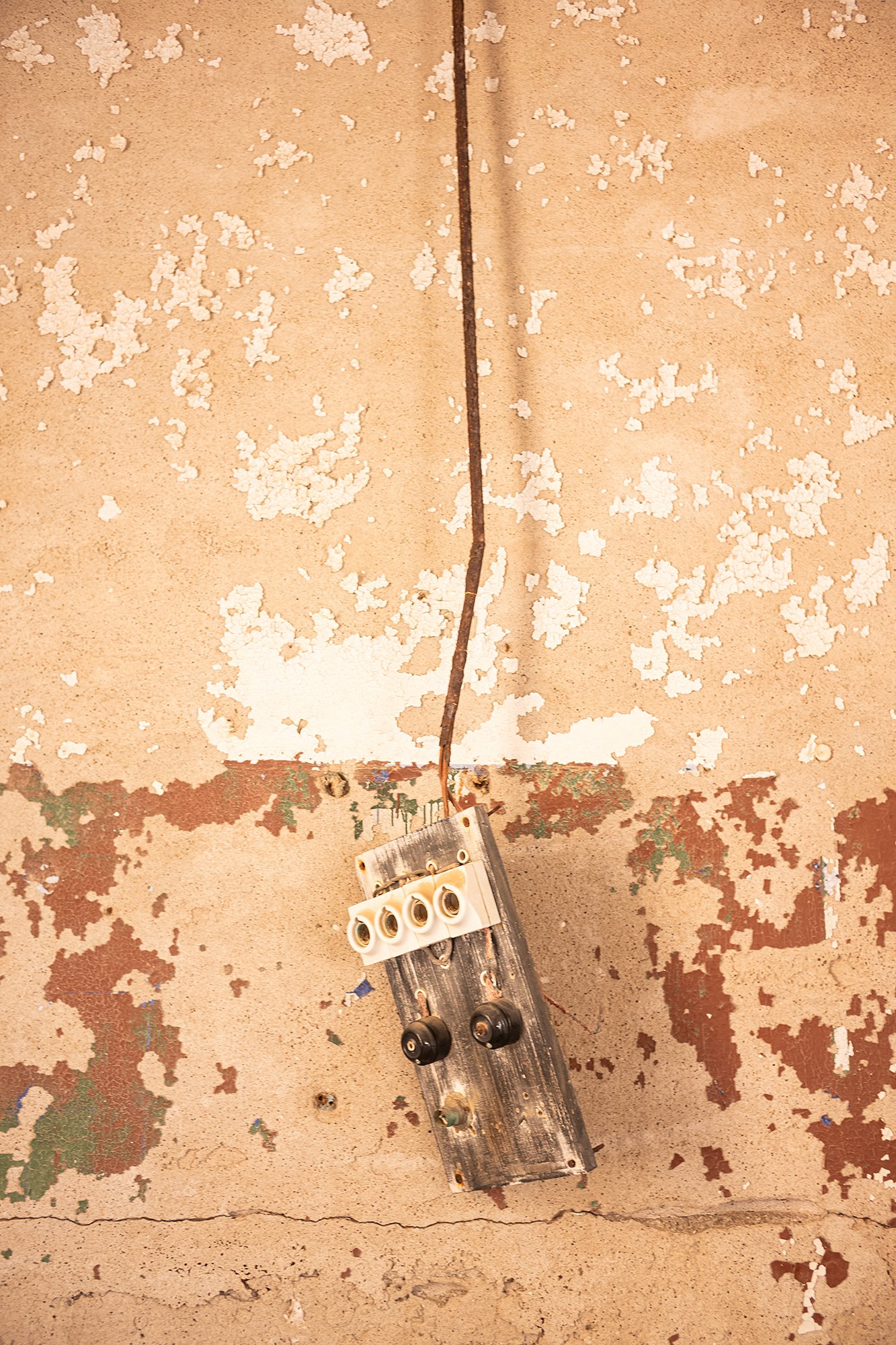
Looking back at the main town bus tours have arrived for the 0930 tour. I’m lad to have come early and to have explored on my own.
I make my way to the multi-story homes on the hill. Set away from the main town, they belonged to the manager, bookkeeper, and architect. I walk the floors and climb the wooden stairs up to the upper floors. The top floors are all boards and decay and I make my way cautiously across the planks.
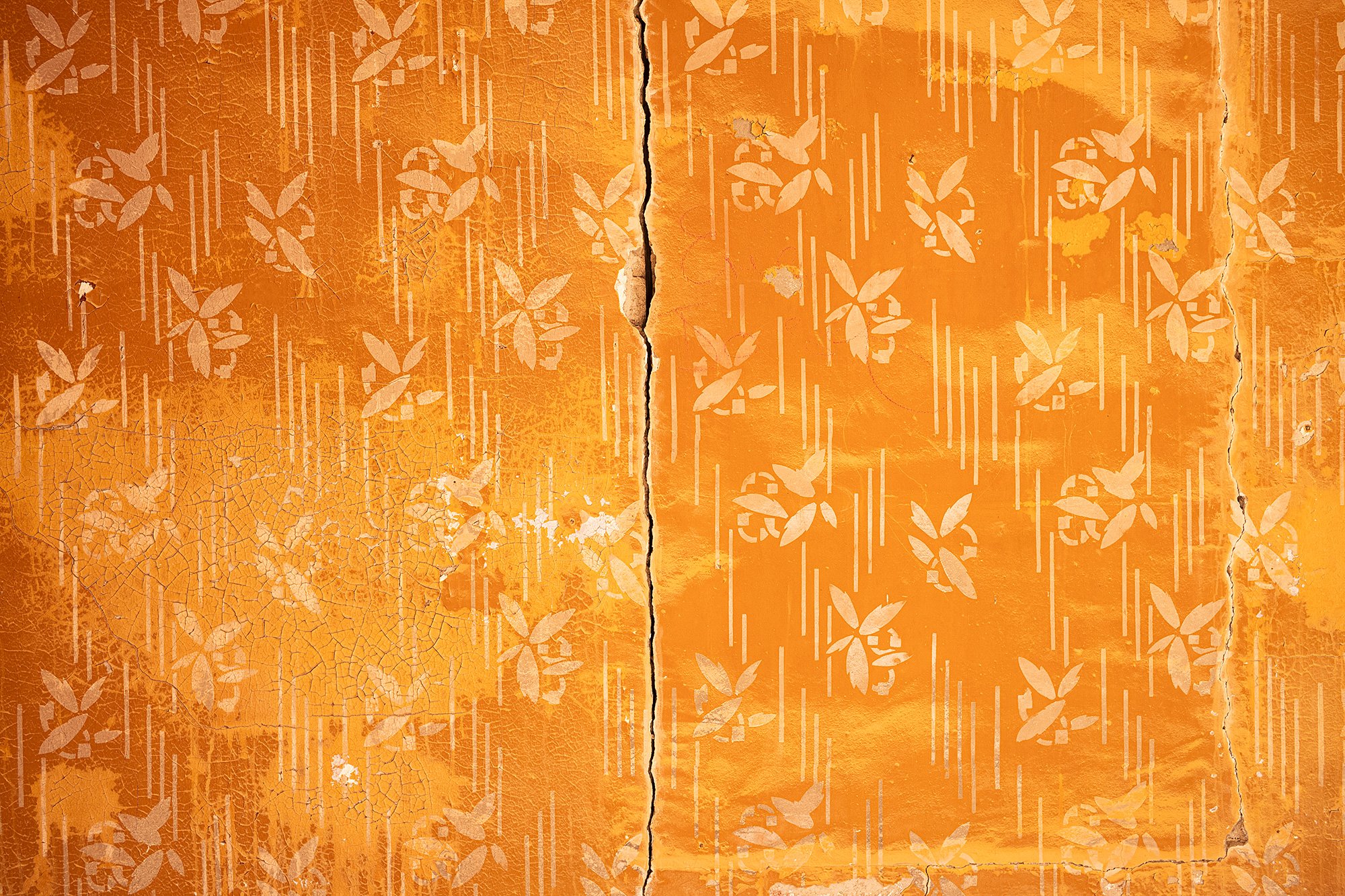

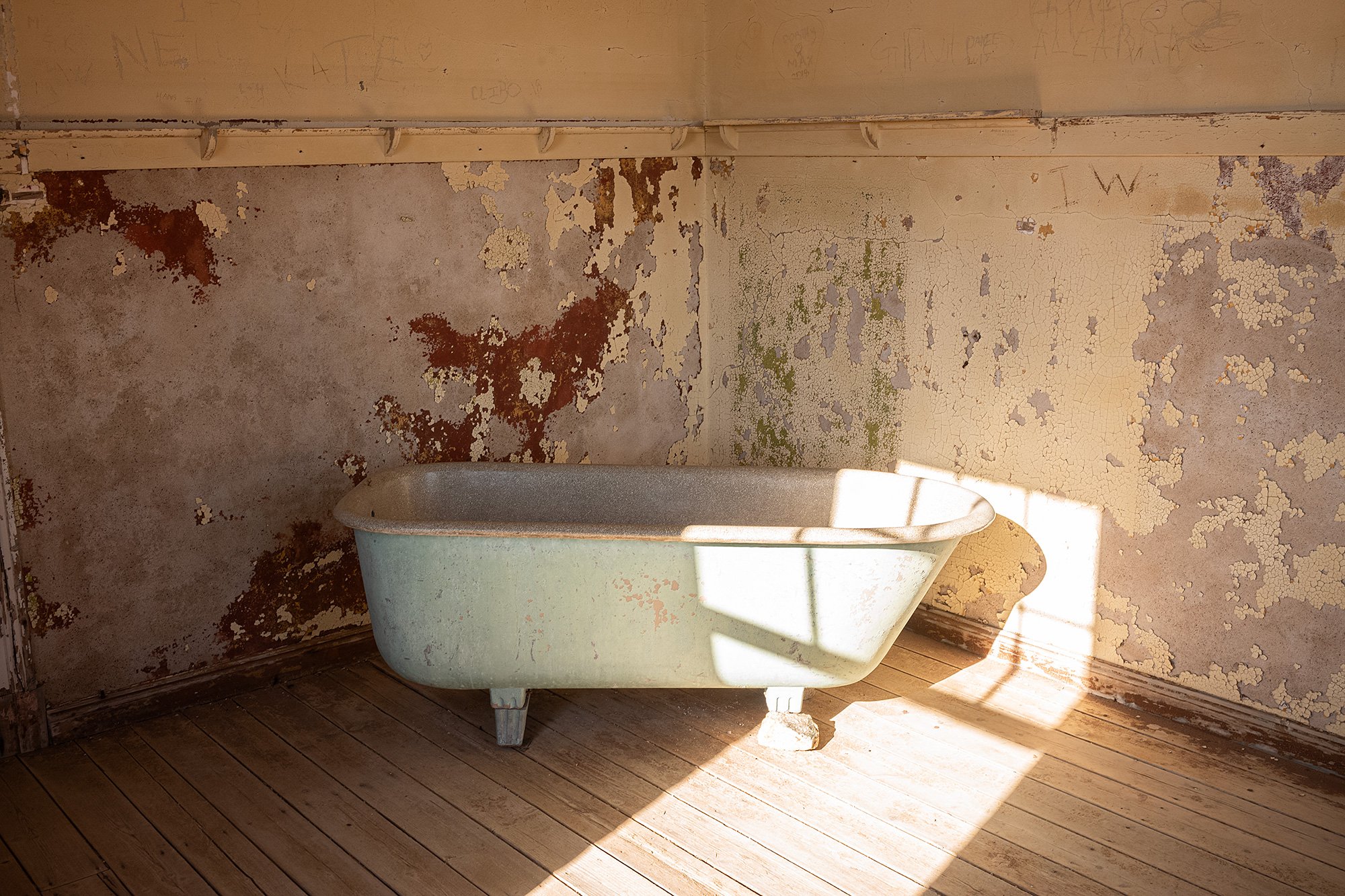

Walking from one home to another I pass the husk of a former home, all but dismantled and reclaimed by the desert.

I can’t get enough of the textures and the colors of the buildings. Here, the sand has been kept at bay. The preservation seems to underscore the contrast between the rich and the poor.
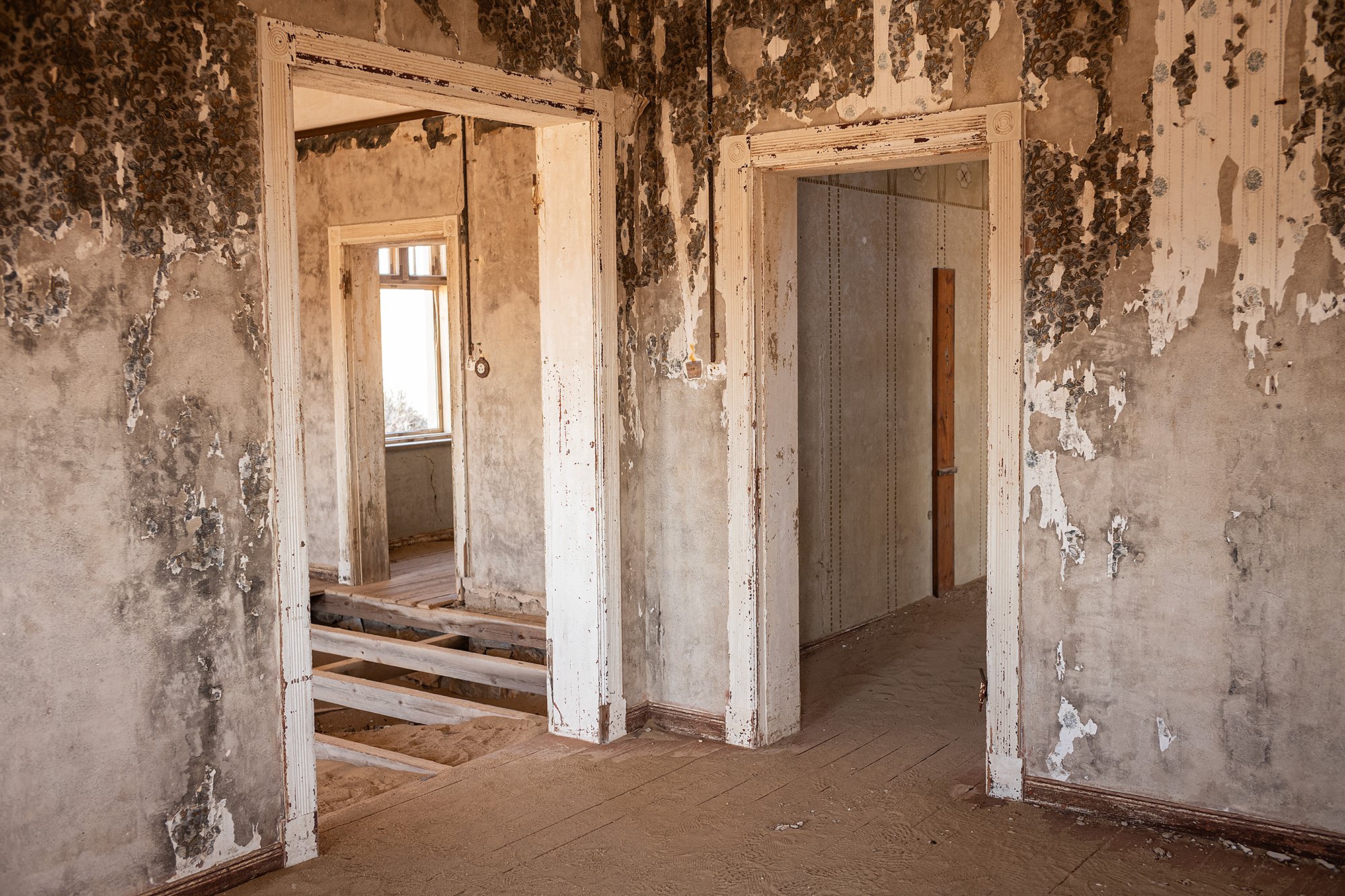
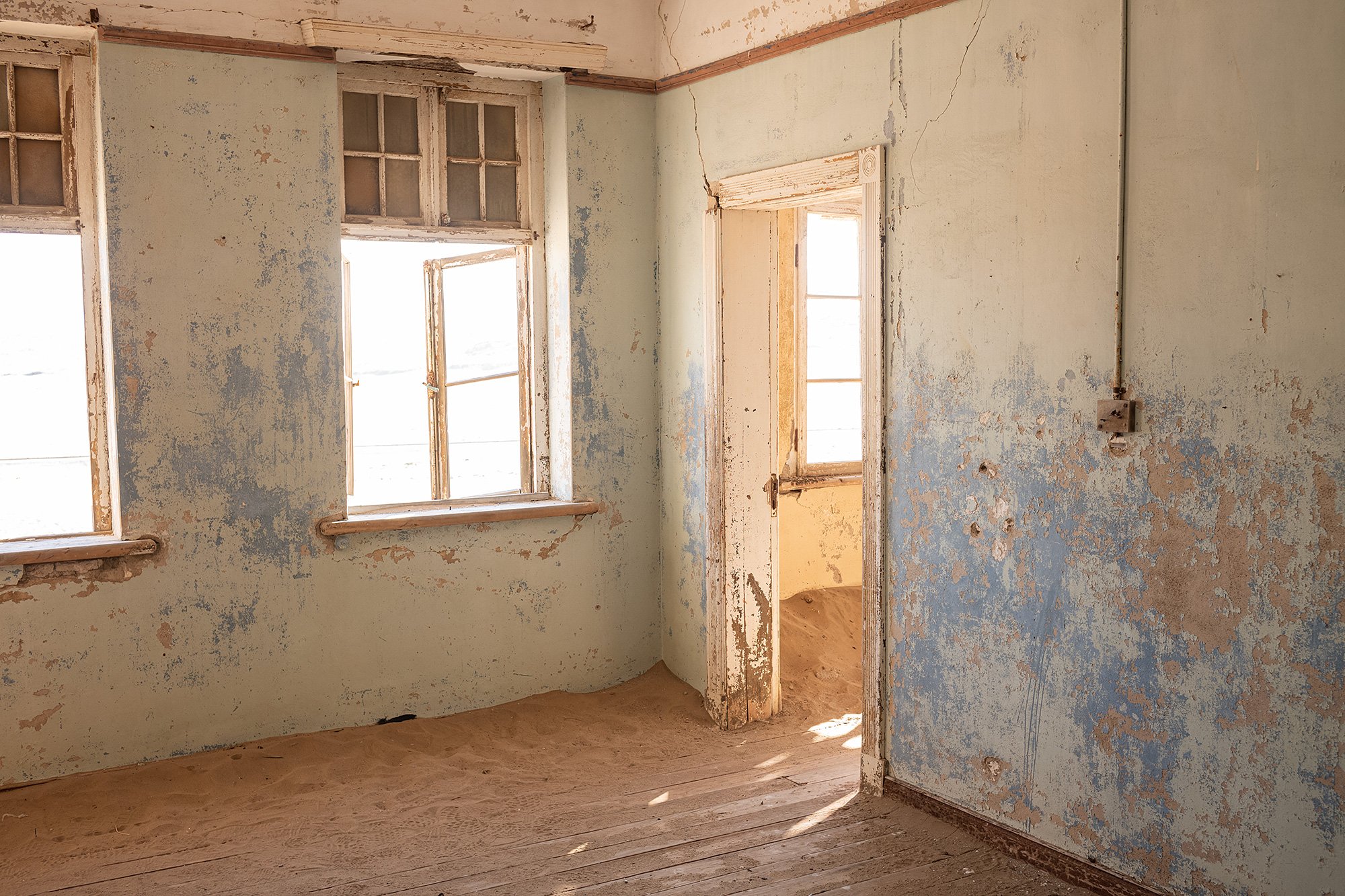
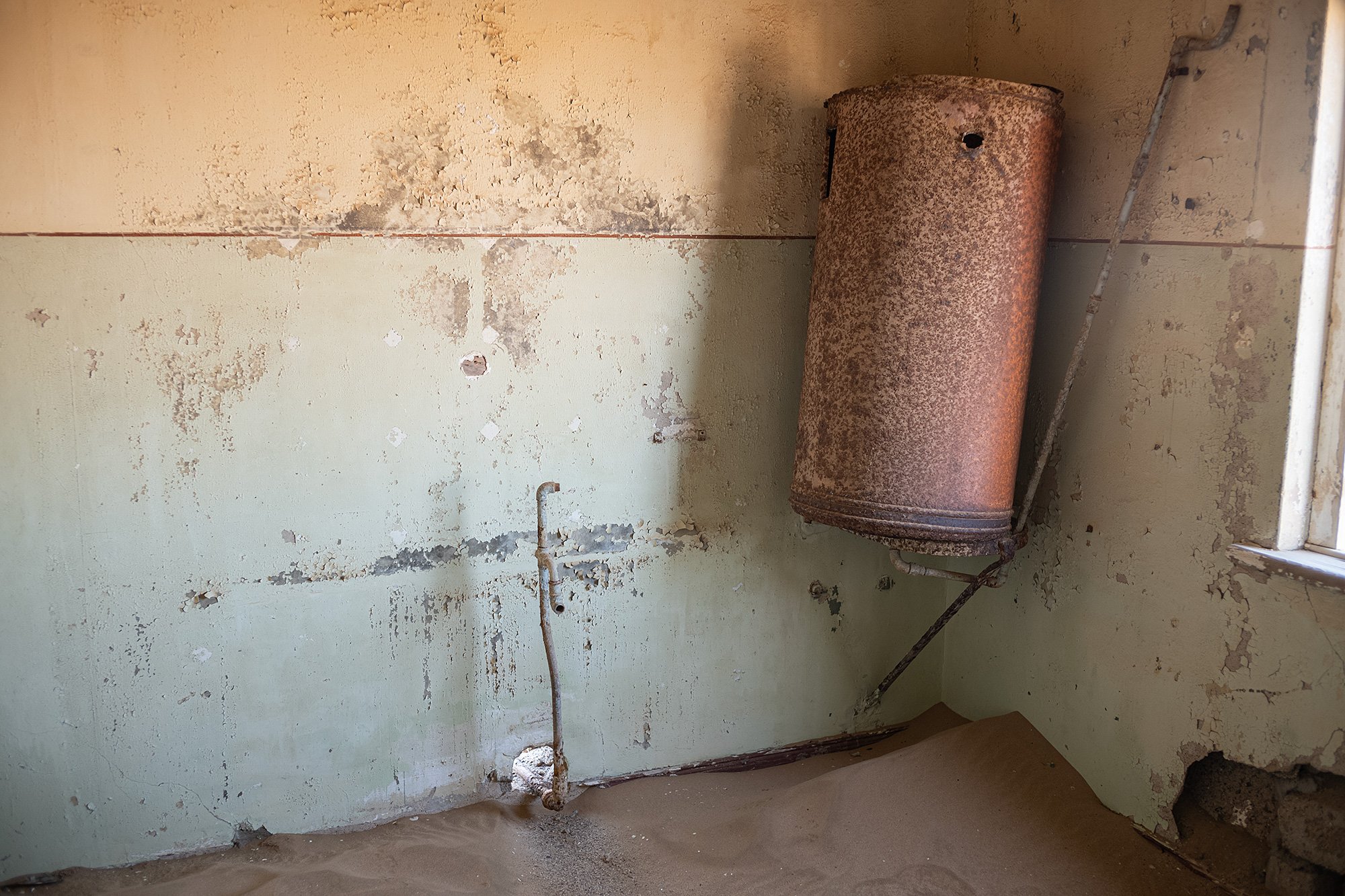

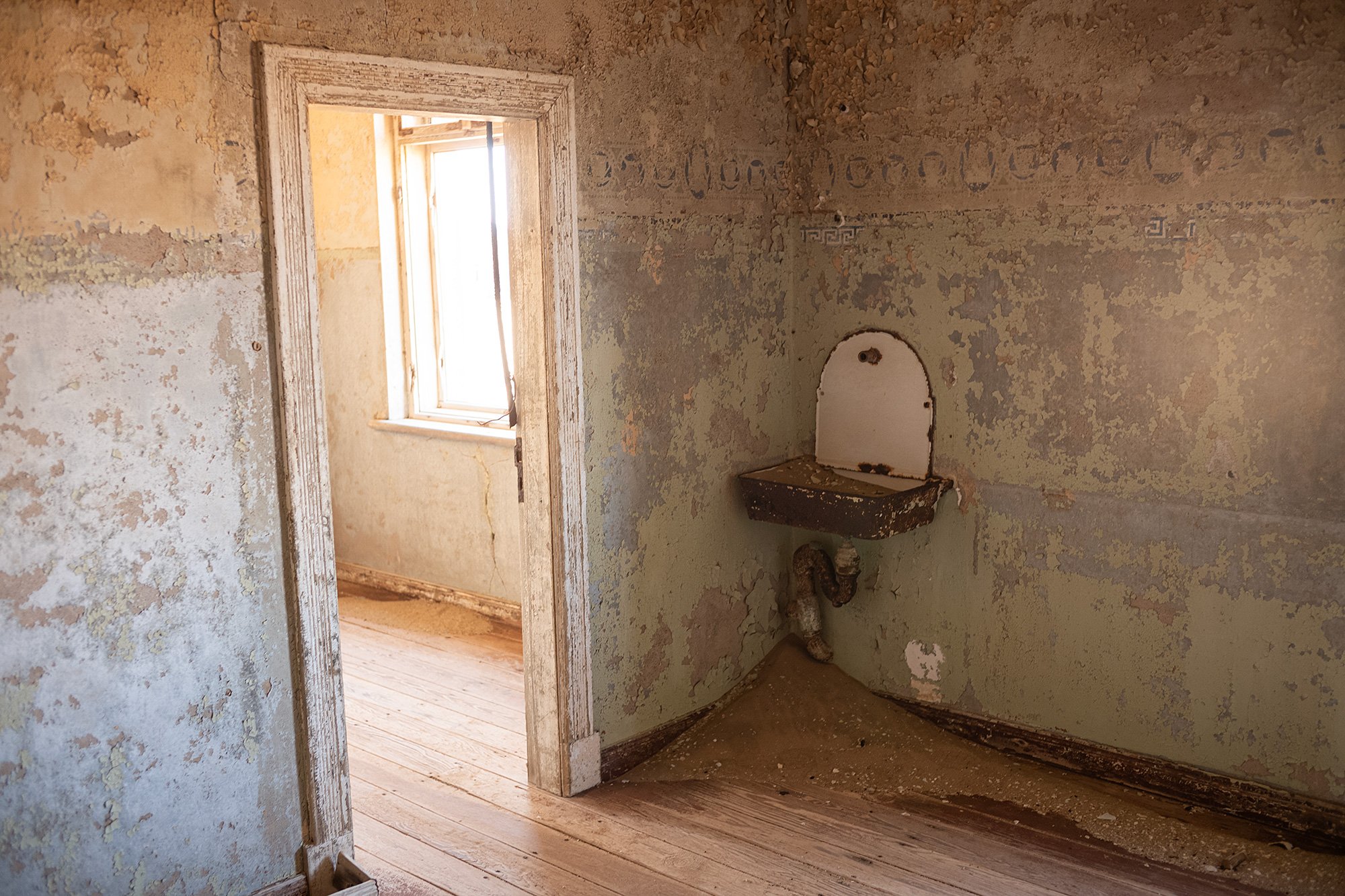
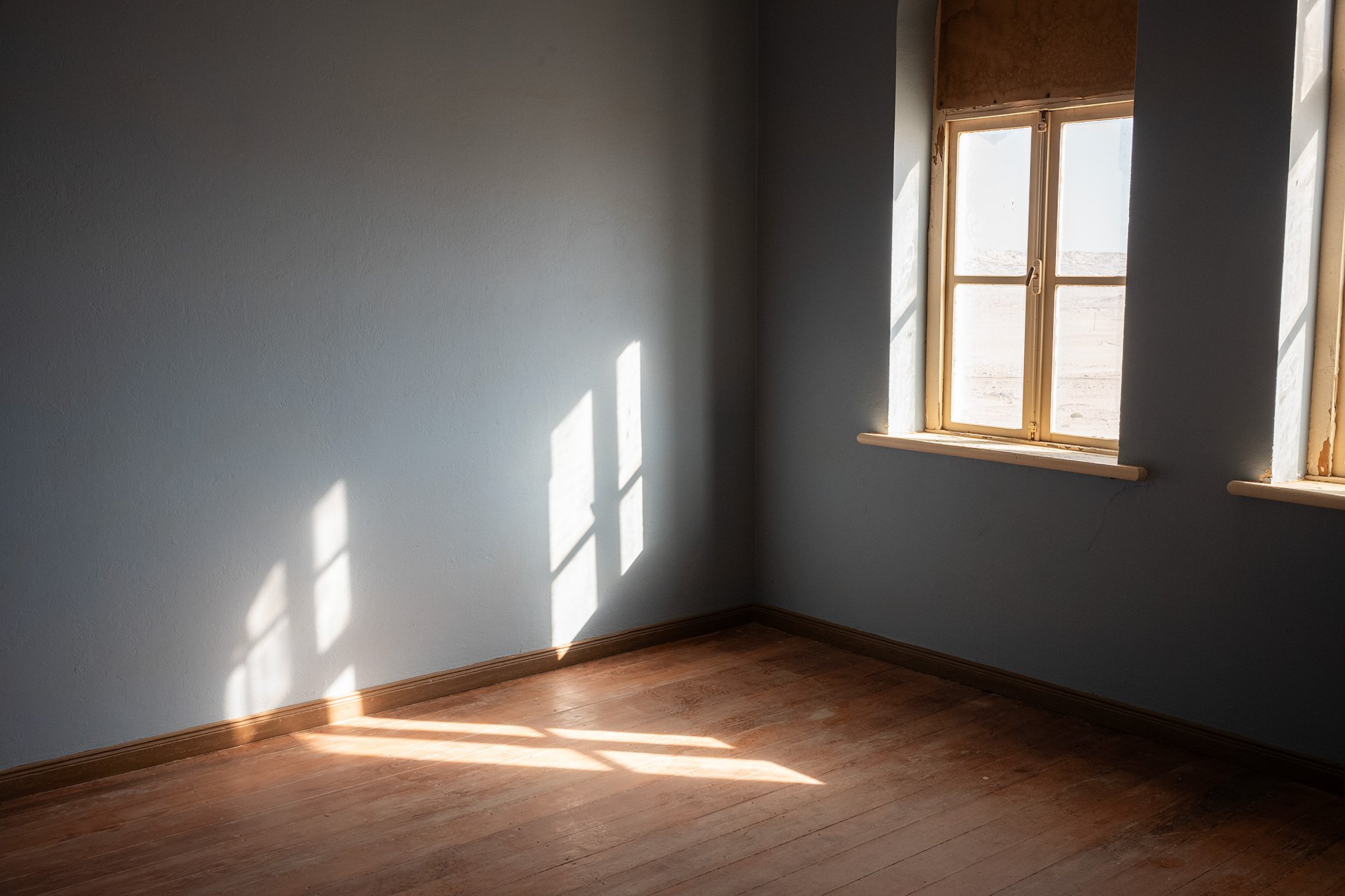
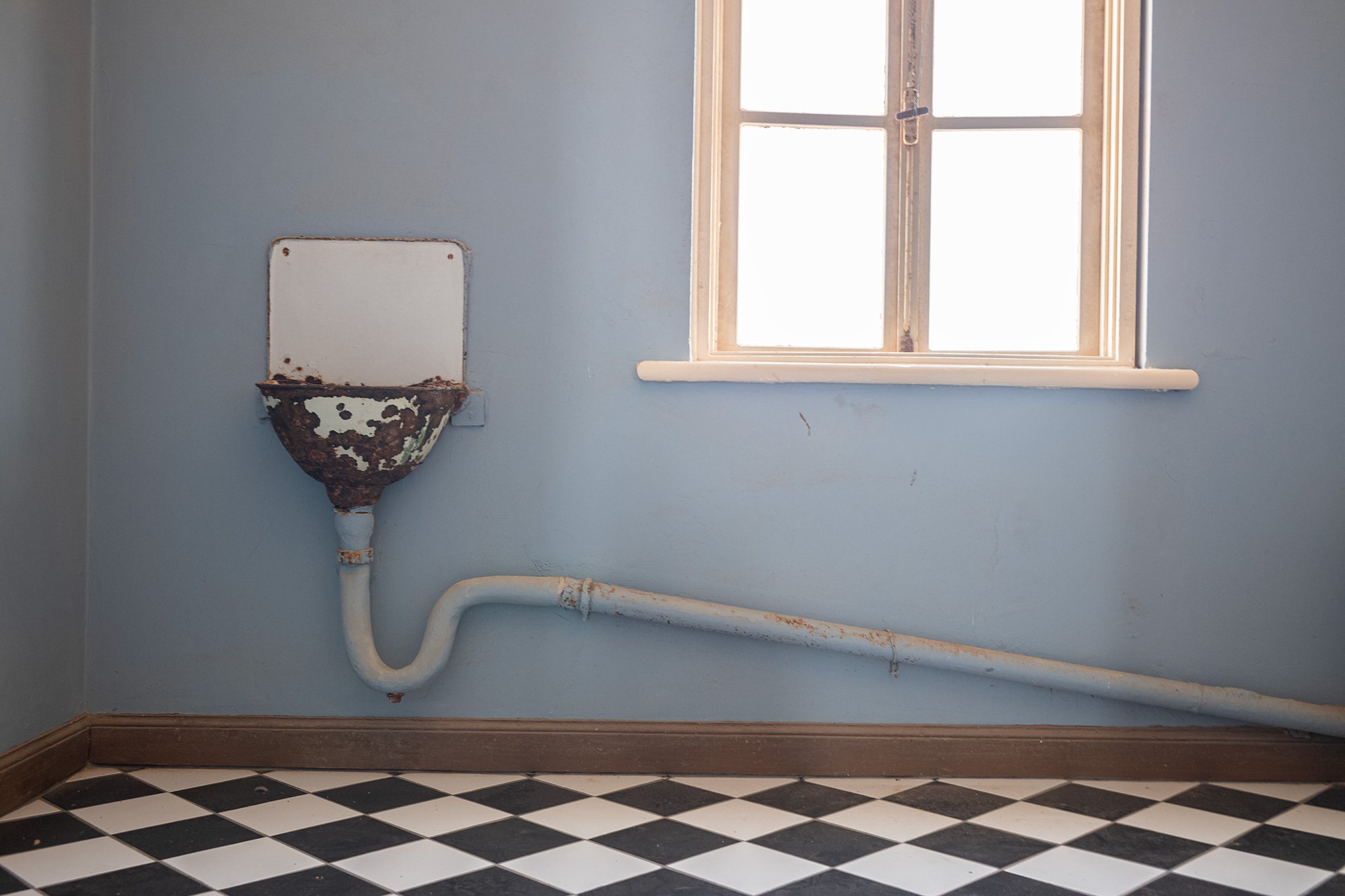
I leave the mansion and head back towards town. The sun is high in the sky and the coolness of the morning has given way to what promises to be a much warmer day. The sand collects in my shoes, the light reflects in my eyes.

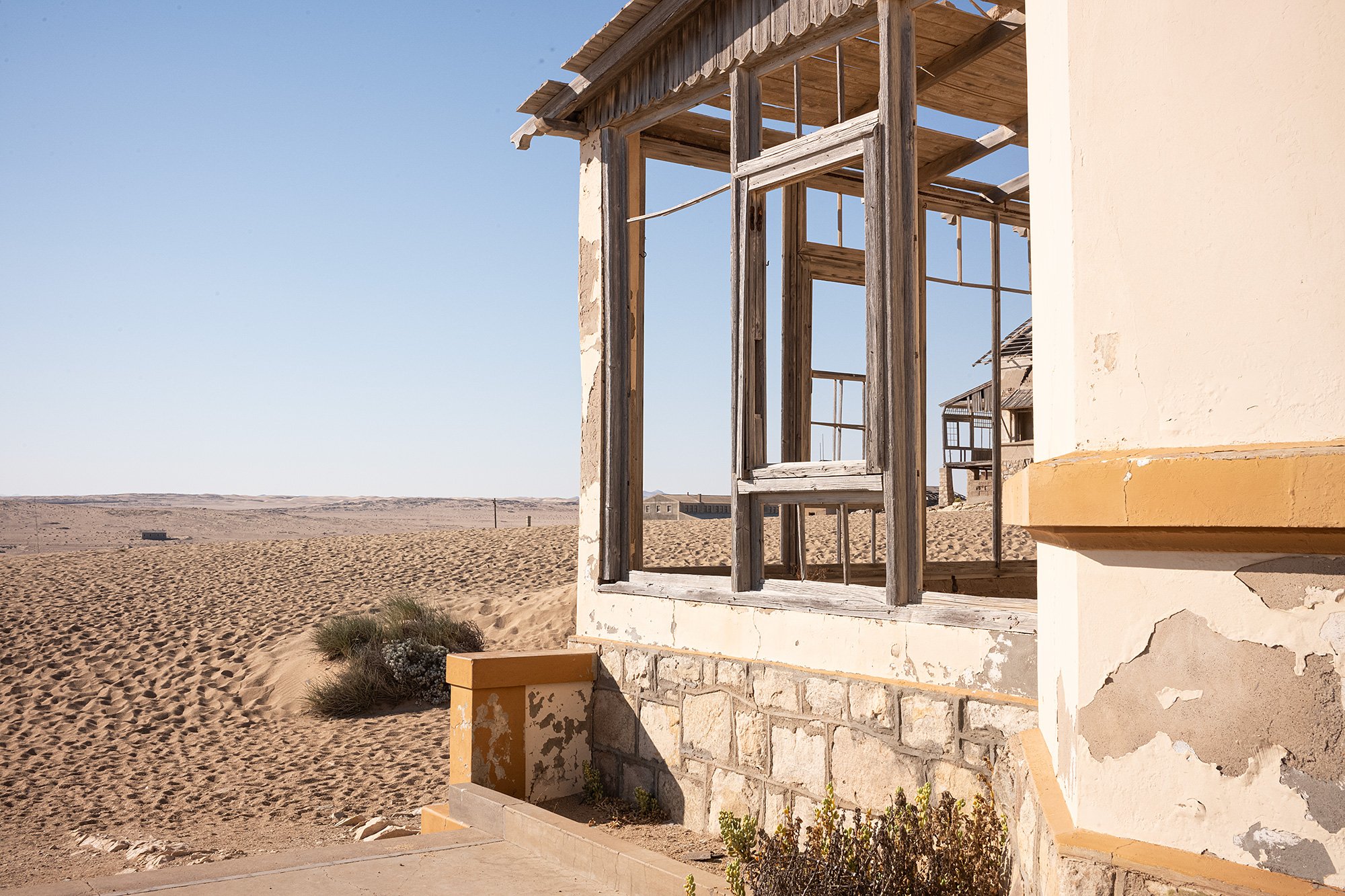
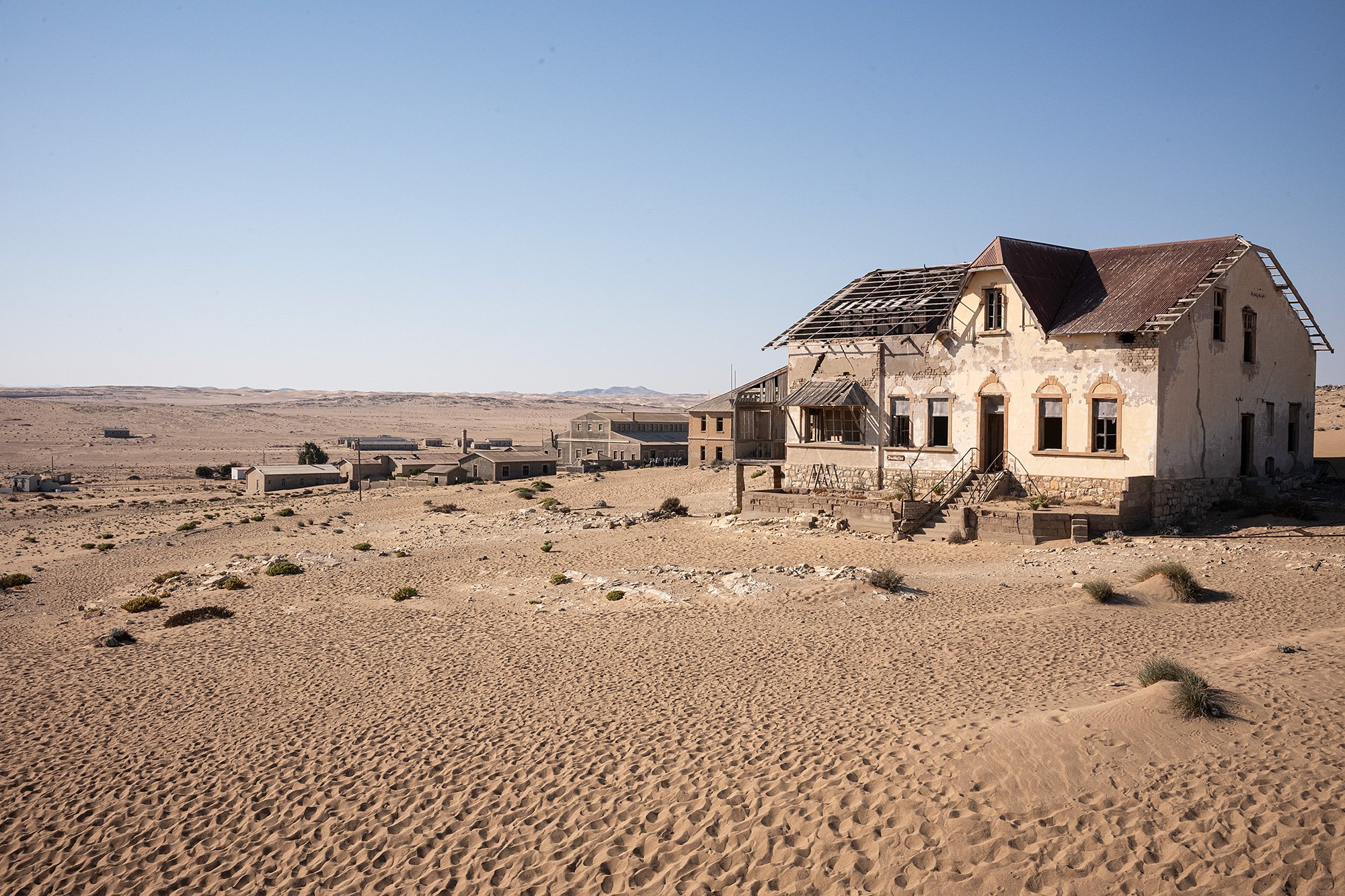
By the time I am back in the main area of town a large tour group has begun to explore the buildings. I bide my time and wait for them to pass before exploring the last of the available homes, letting myself be transported one last time before moving on.
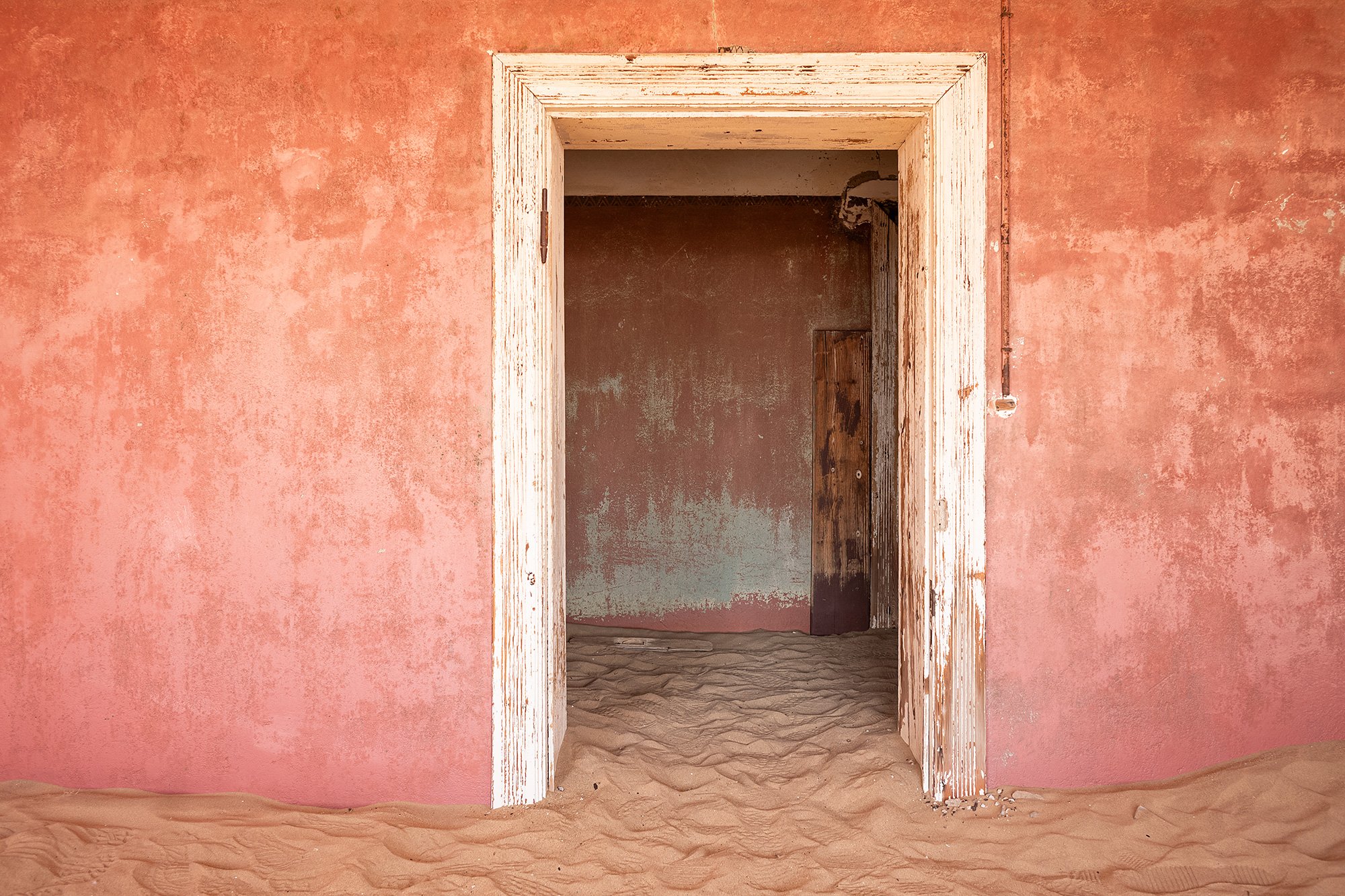
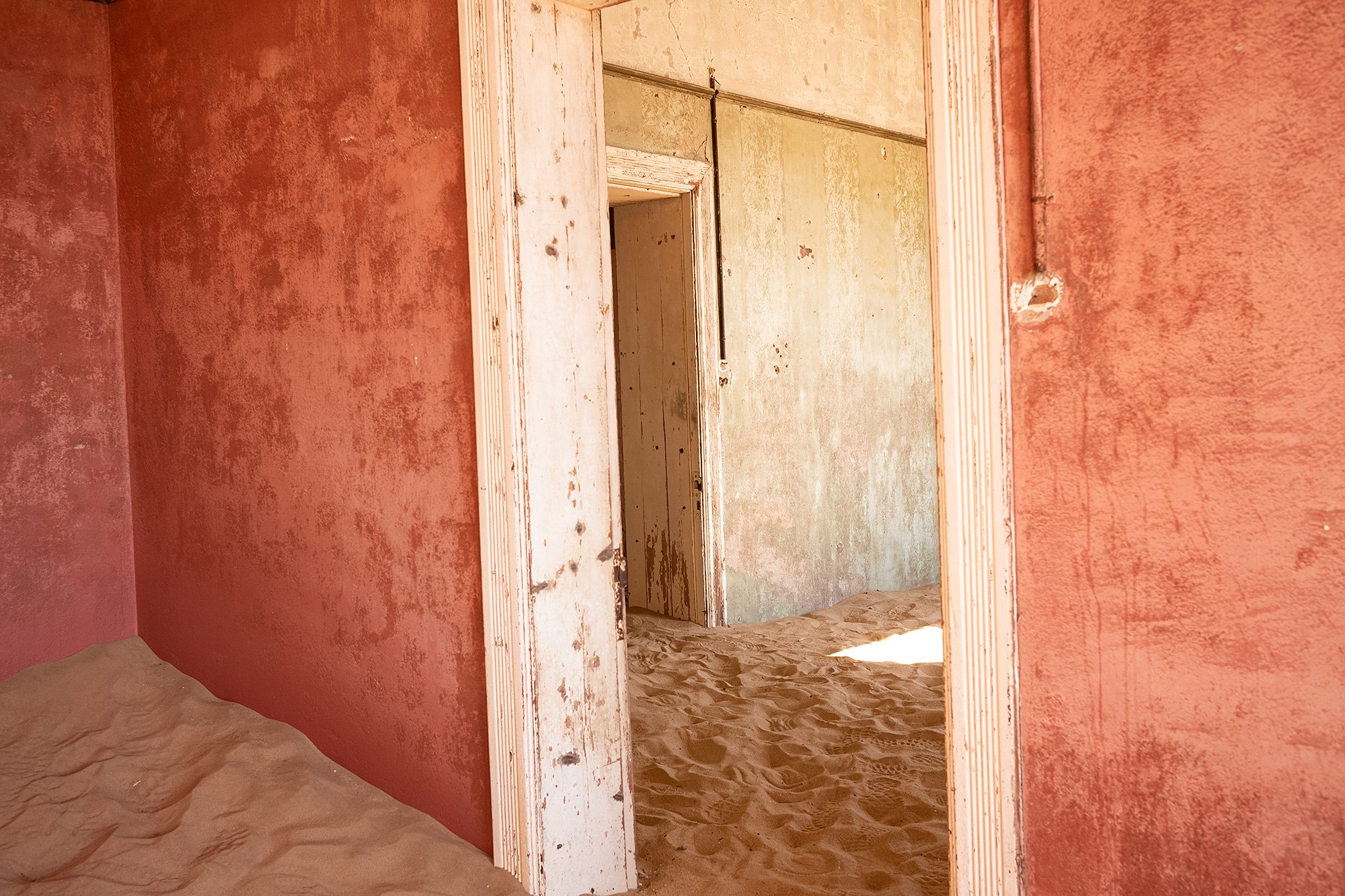
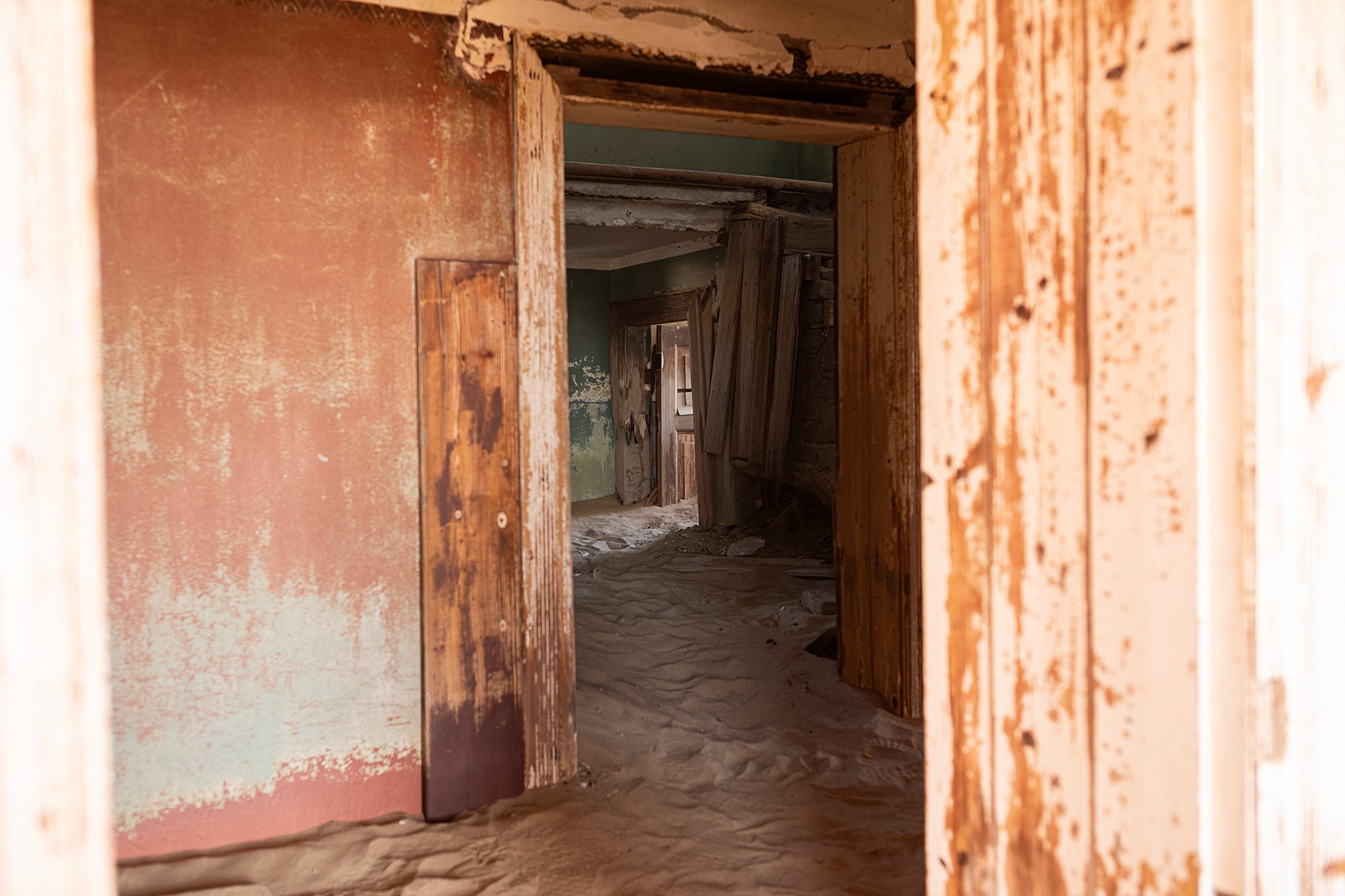
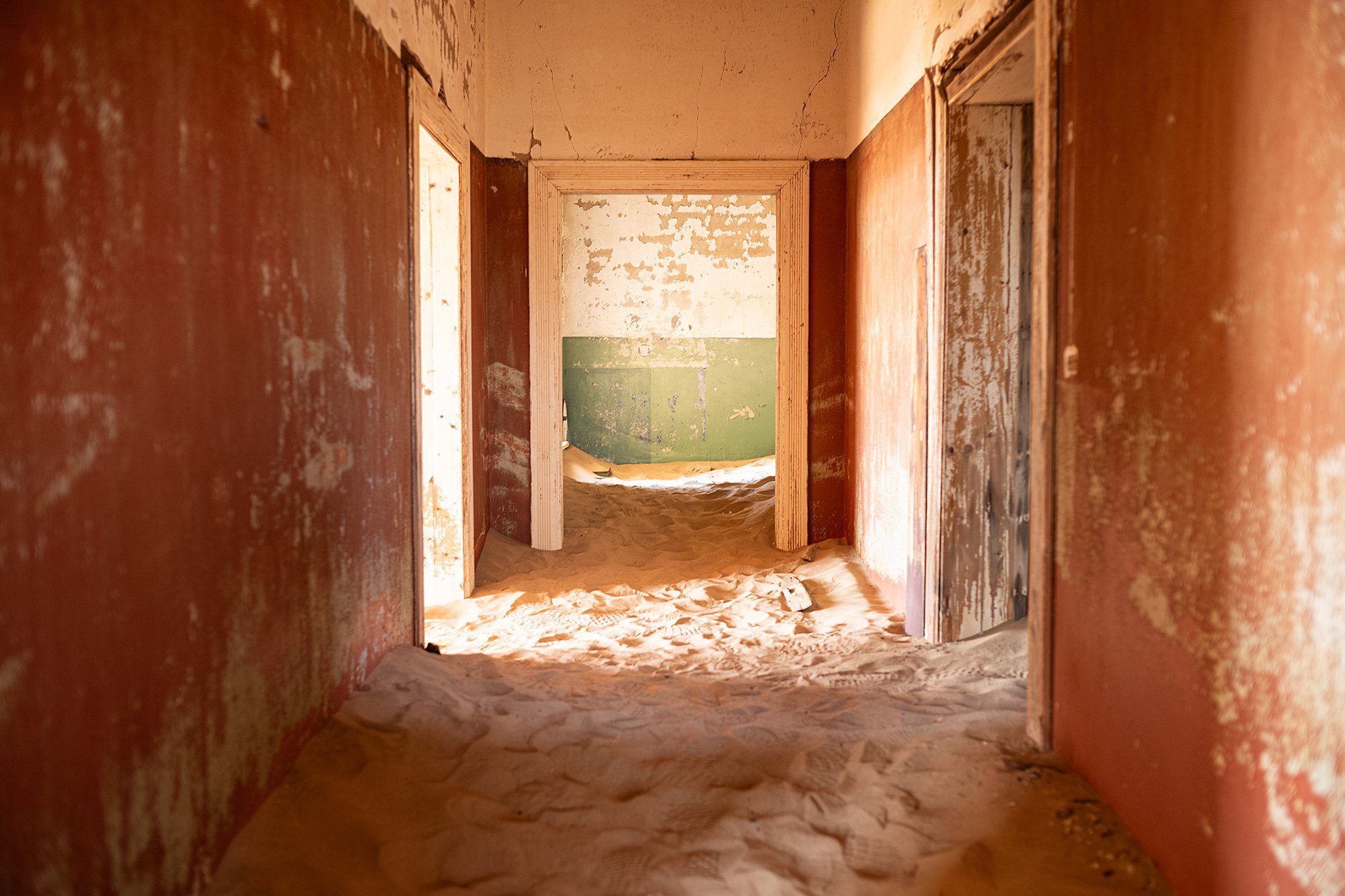
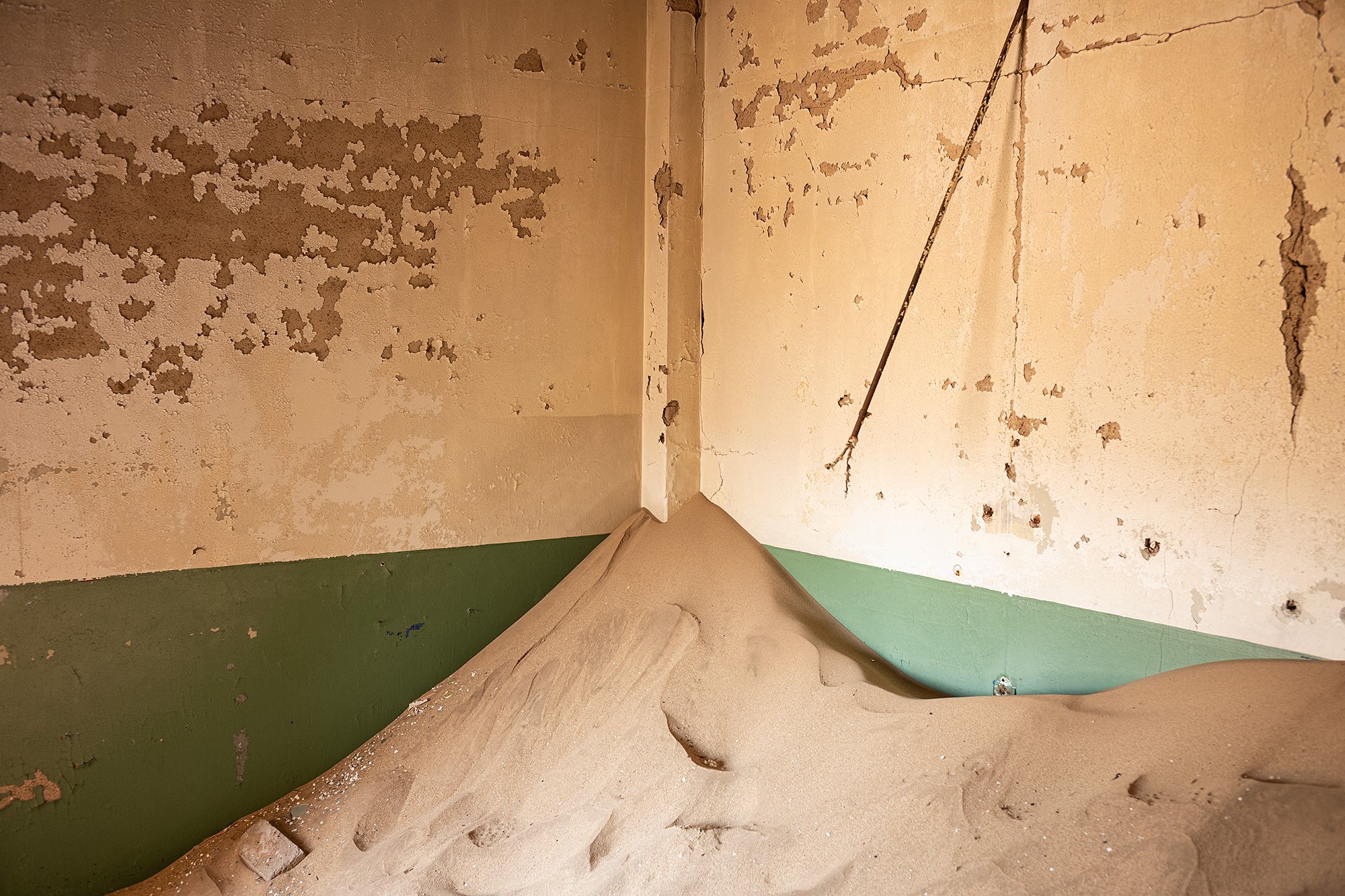

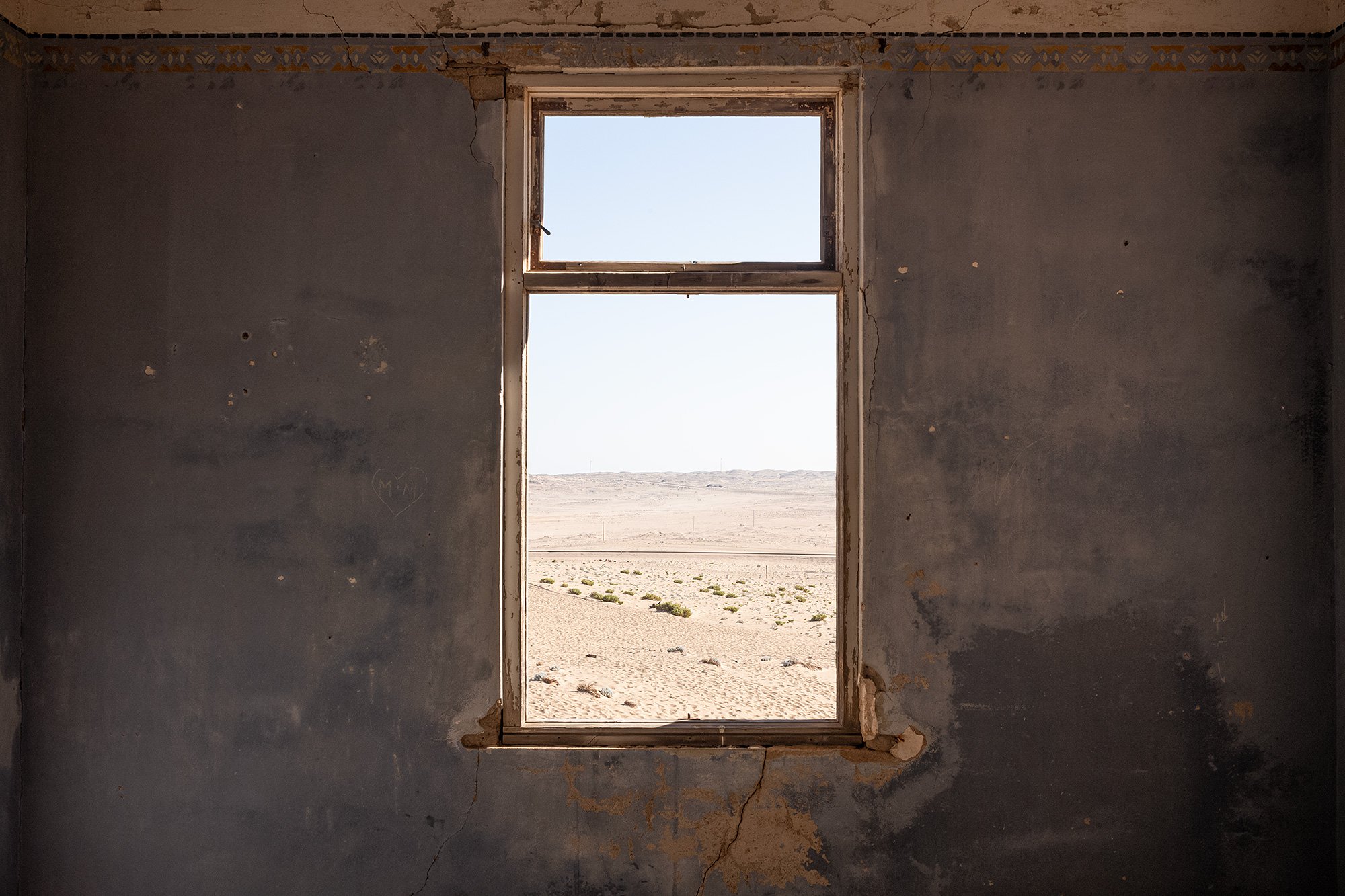

Back in the main building I climb to the small balcony in the auditorium. When I come back down the stairs a guide asks me what I saw. A projection booth? No ghosts? No. Sand? What’s left in my shoes.
On my way out I stop to thank the guard at the front gate. The day is long underway and the magic of the morning has somewhat dissipated. I wish I could return tomrrow before sunrise to to wander the streets of Kolmanskop in the twilight hours before the dawn. For then I would surely see ghosts; I would ask them to welcome me into their homes and to introduce me to what life once was. 🇳🇦
20 May 2024




